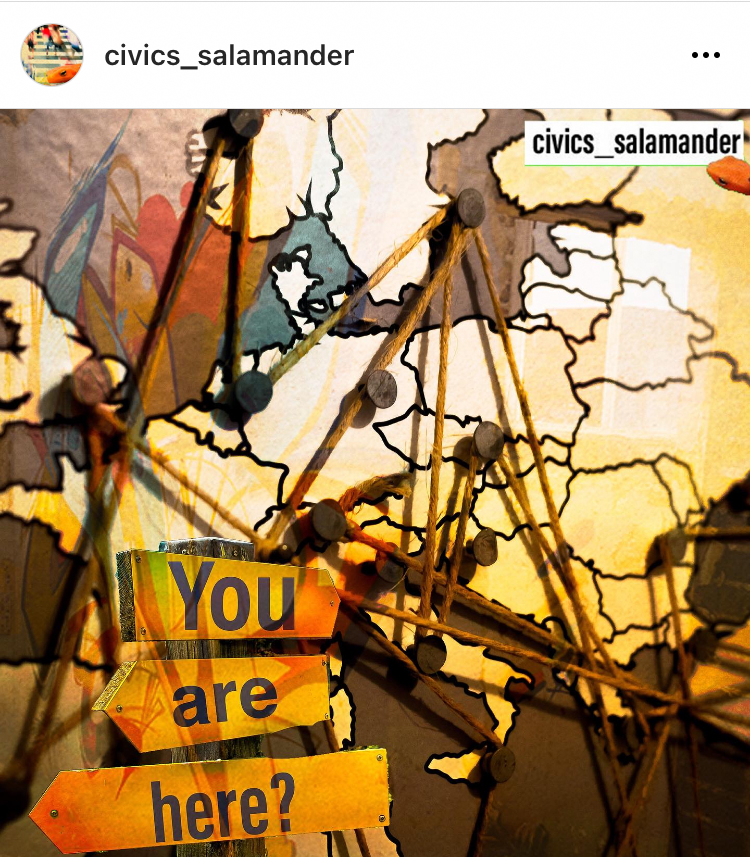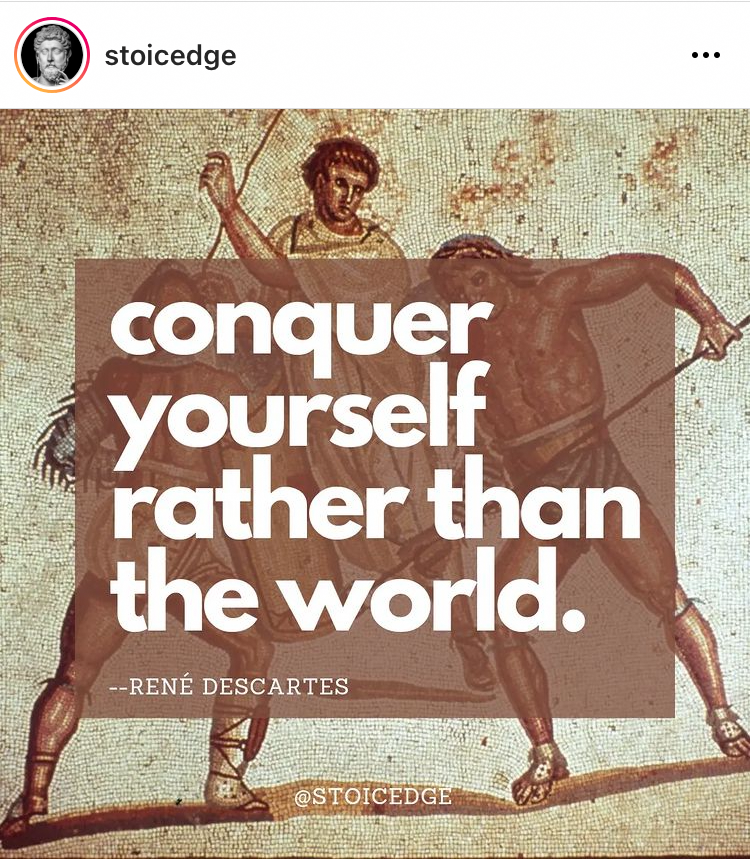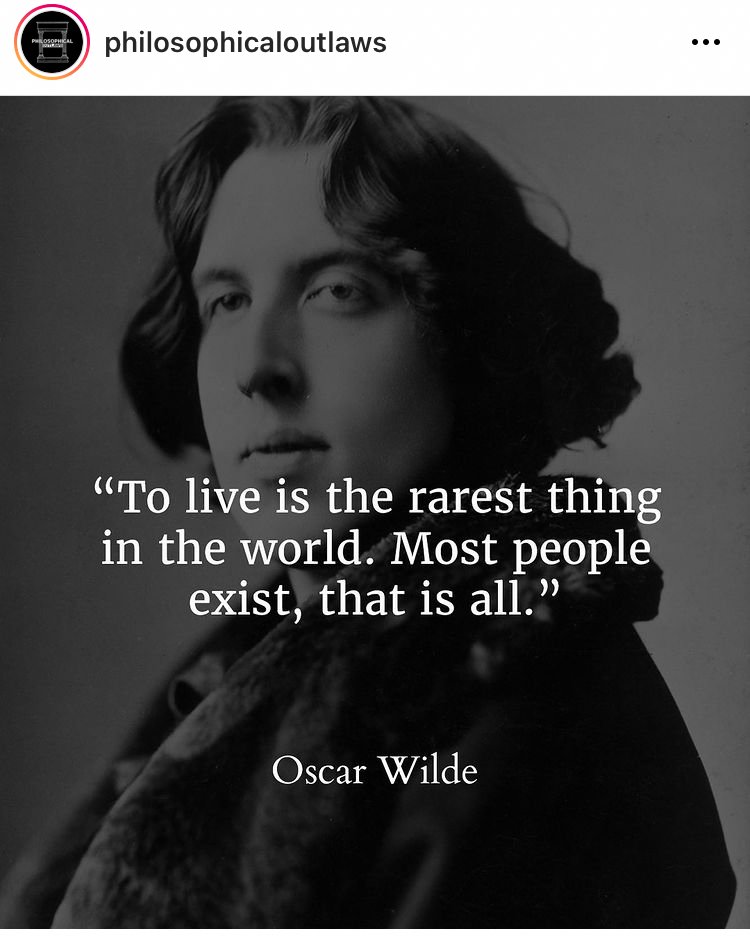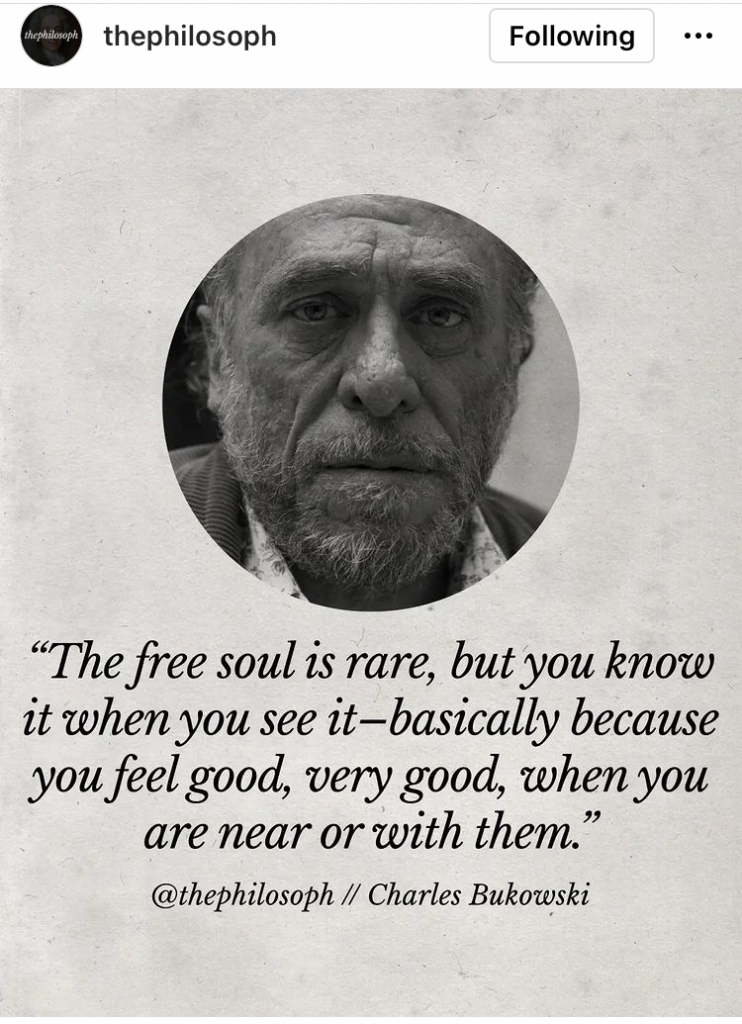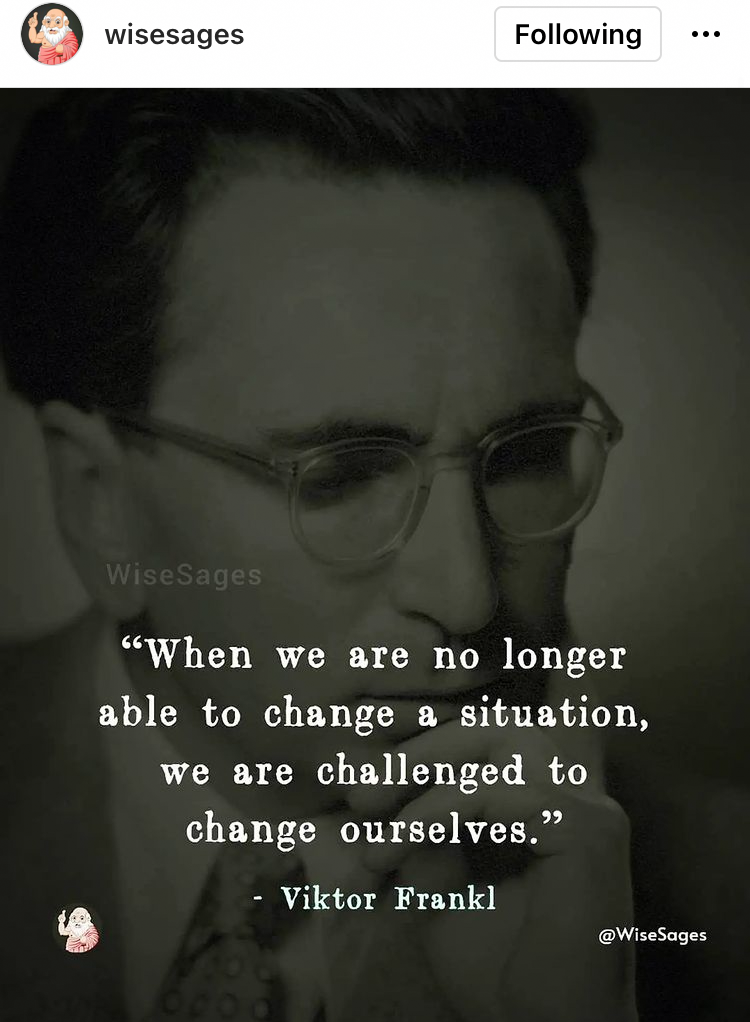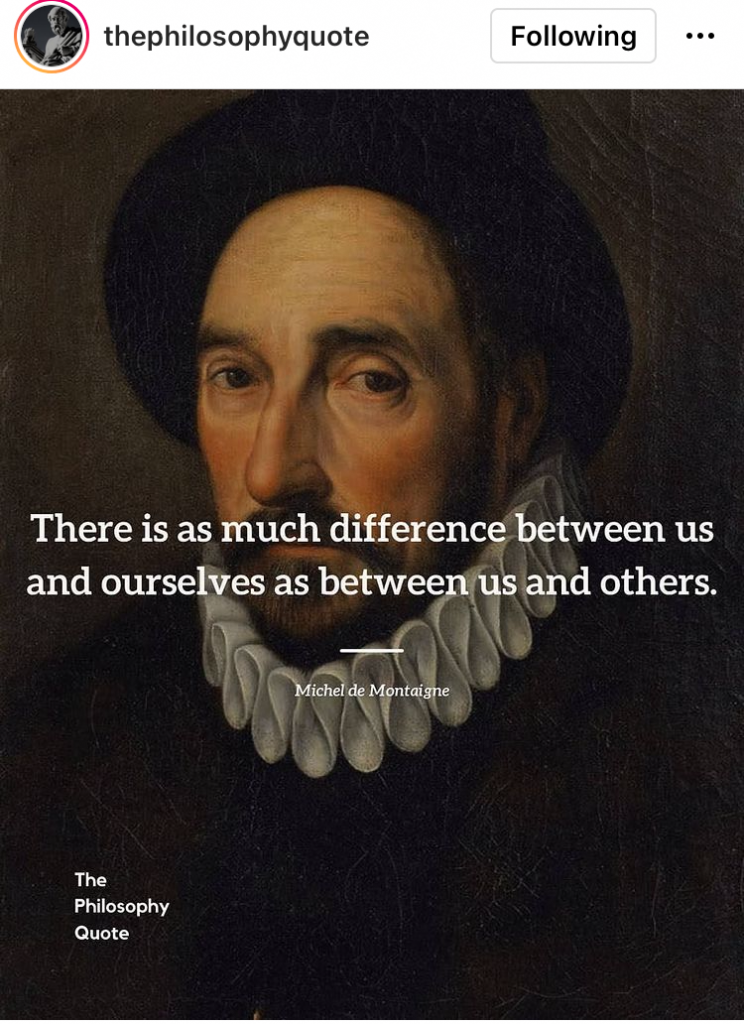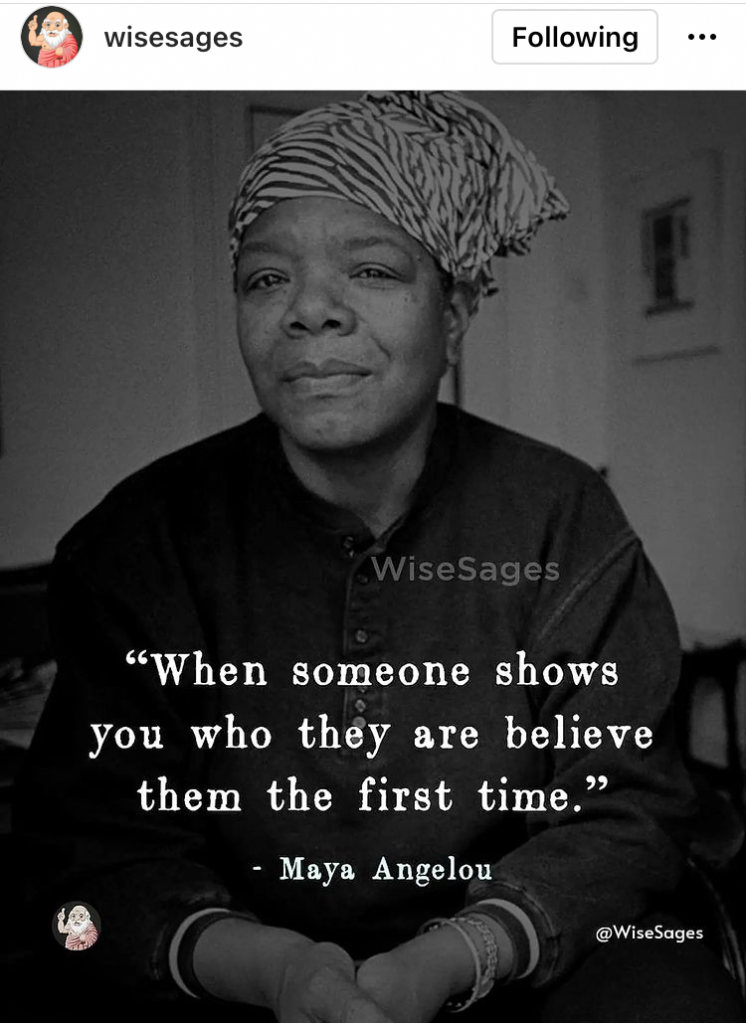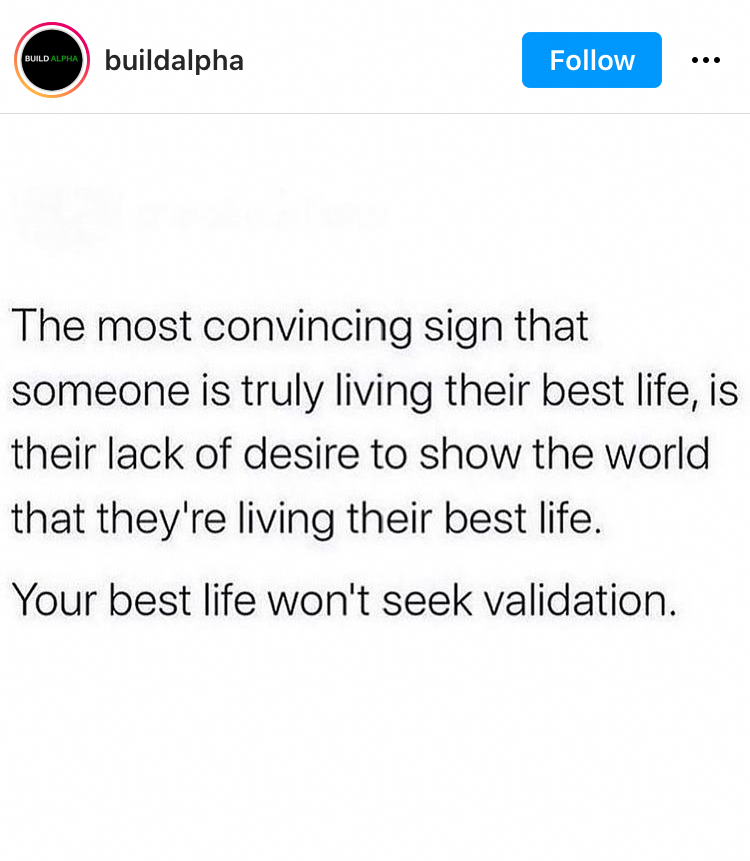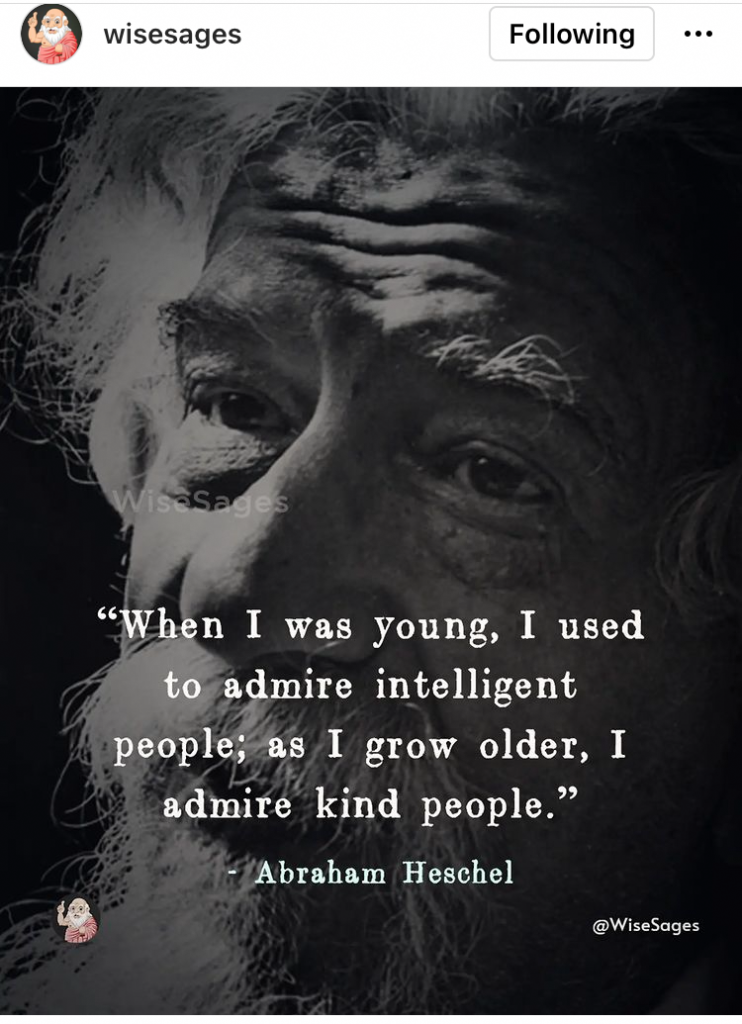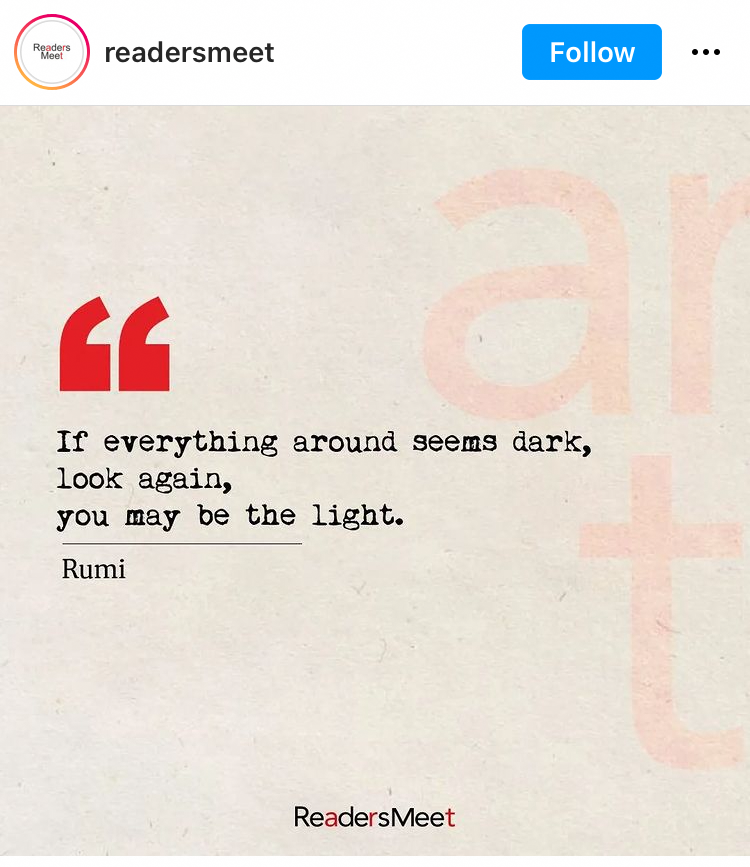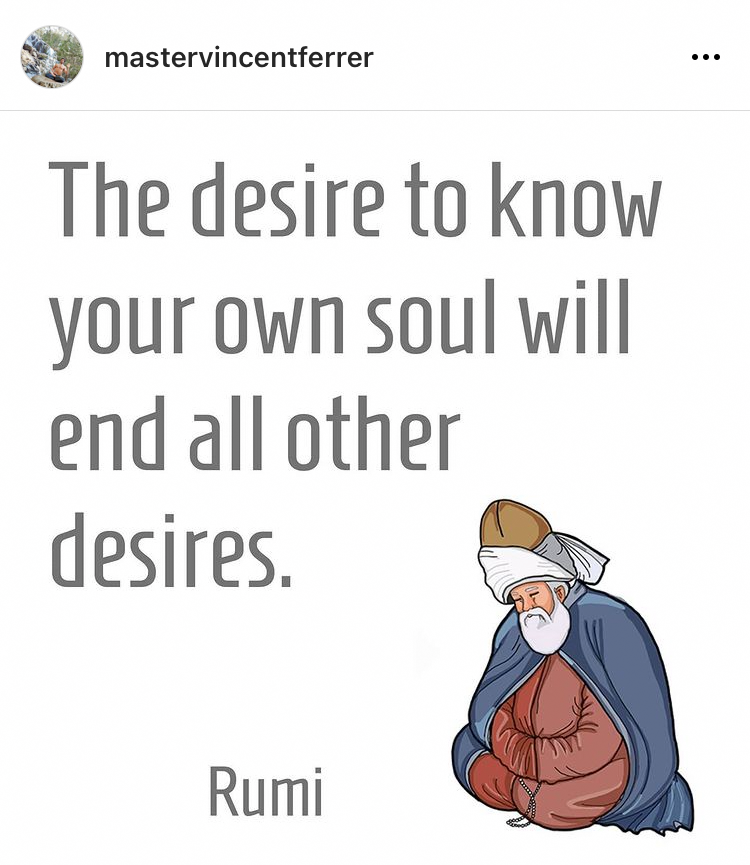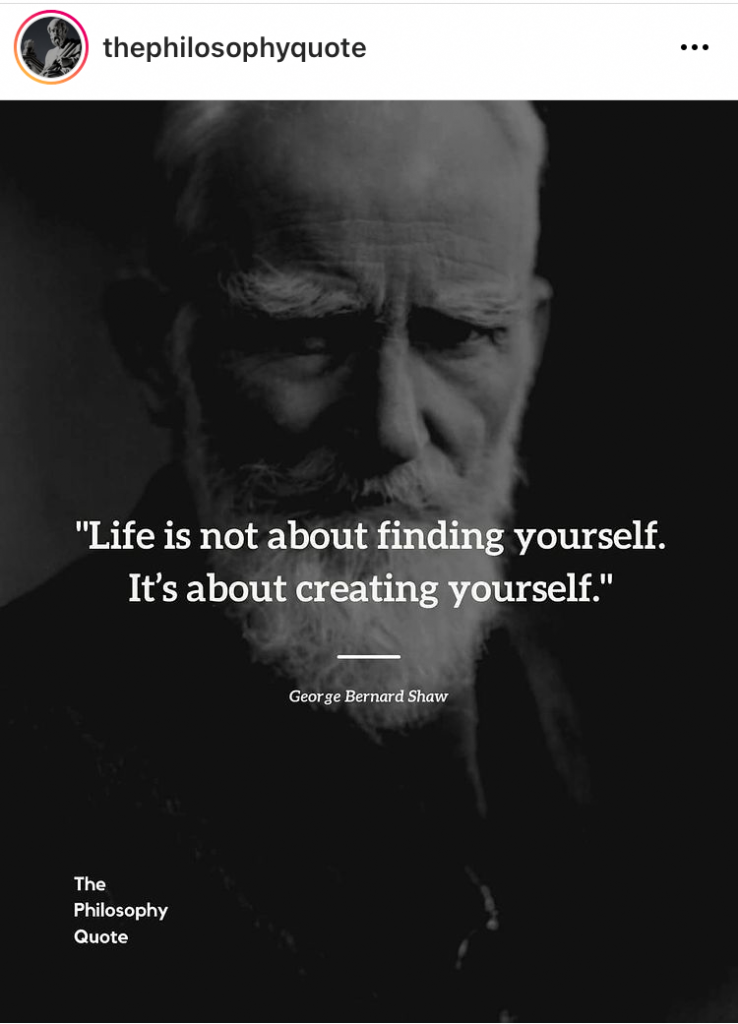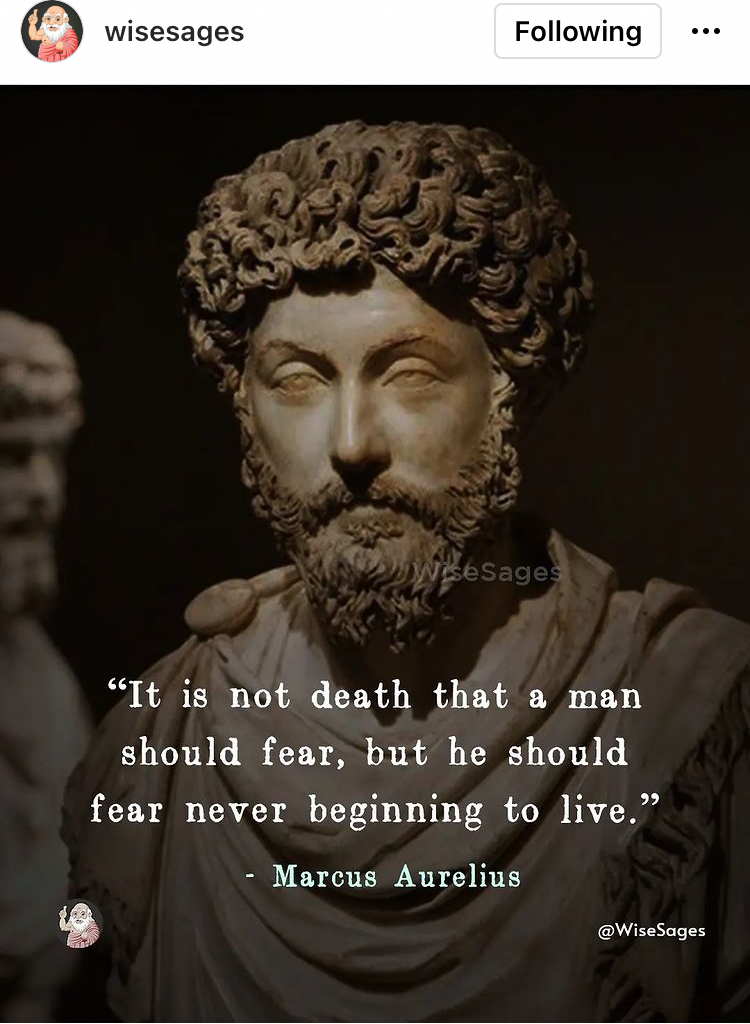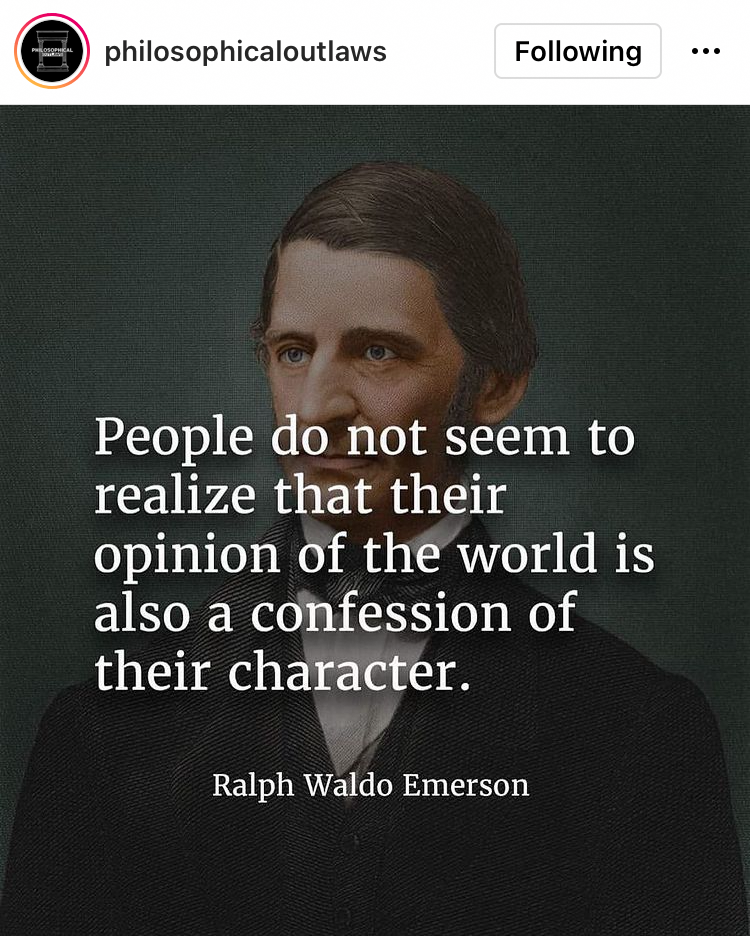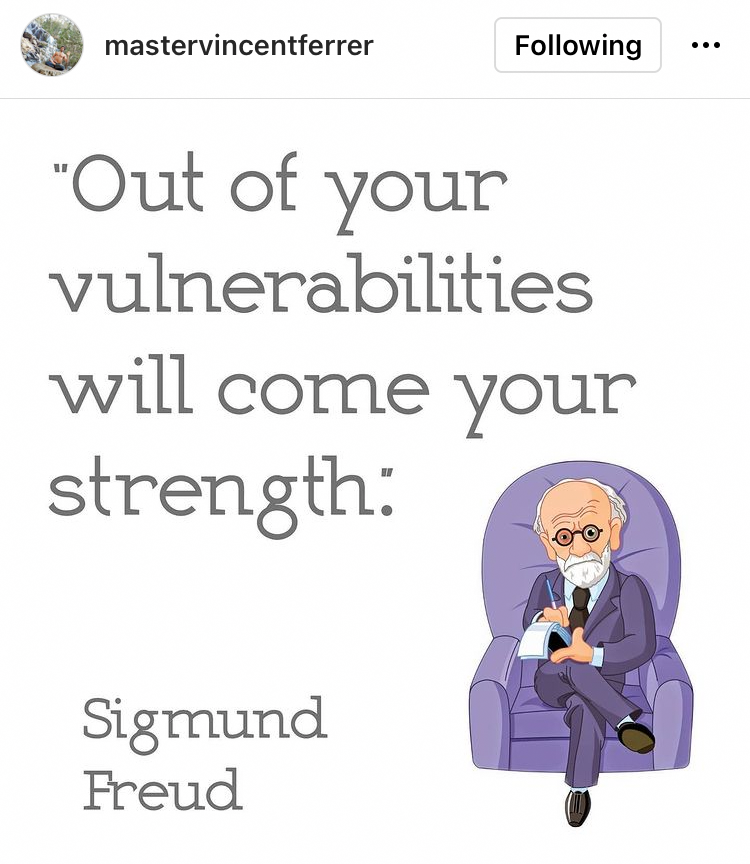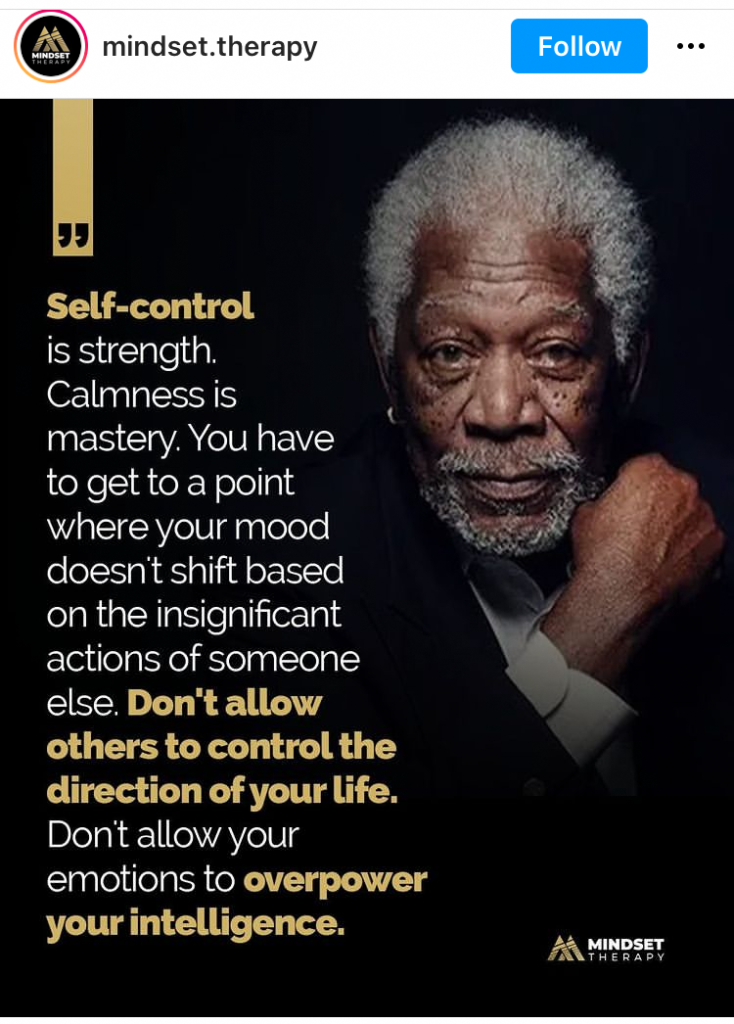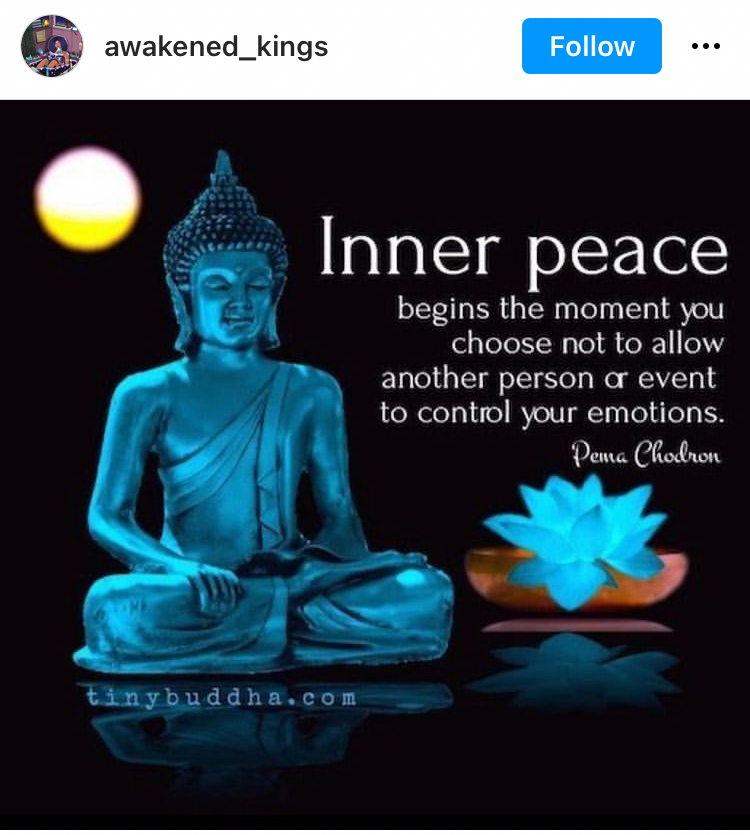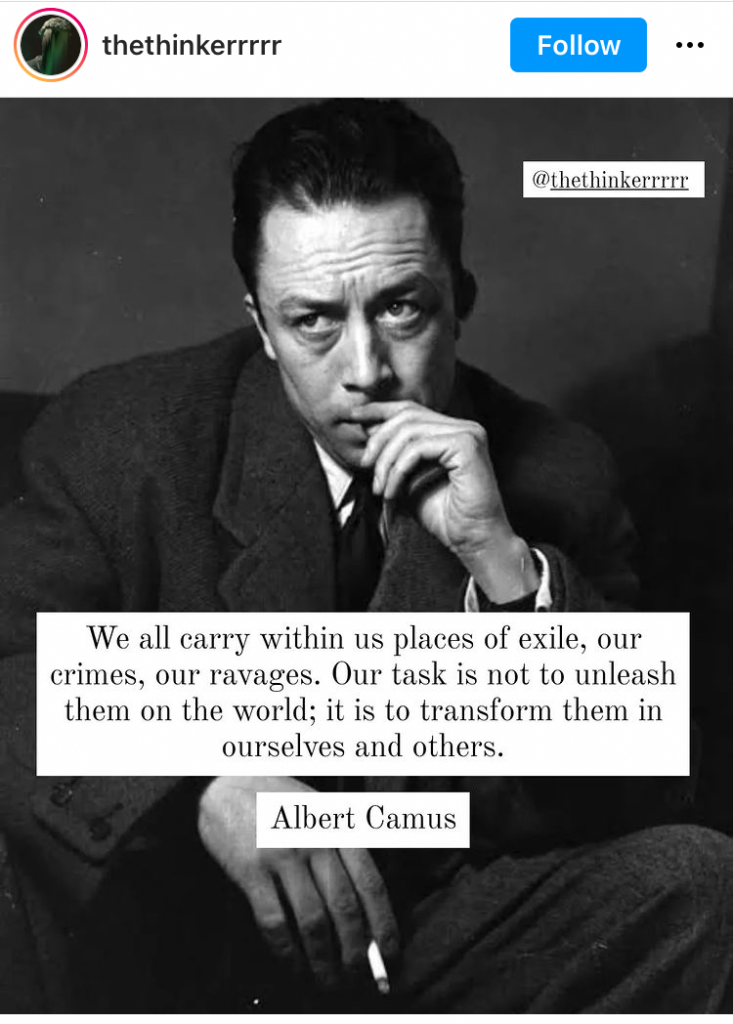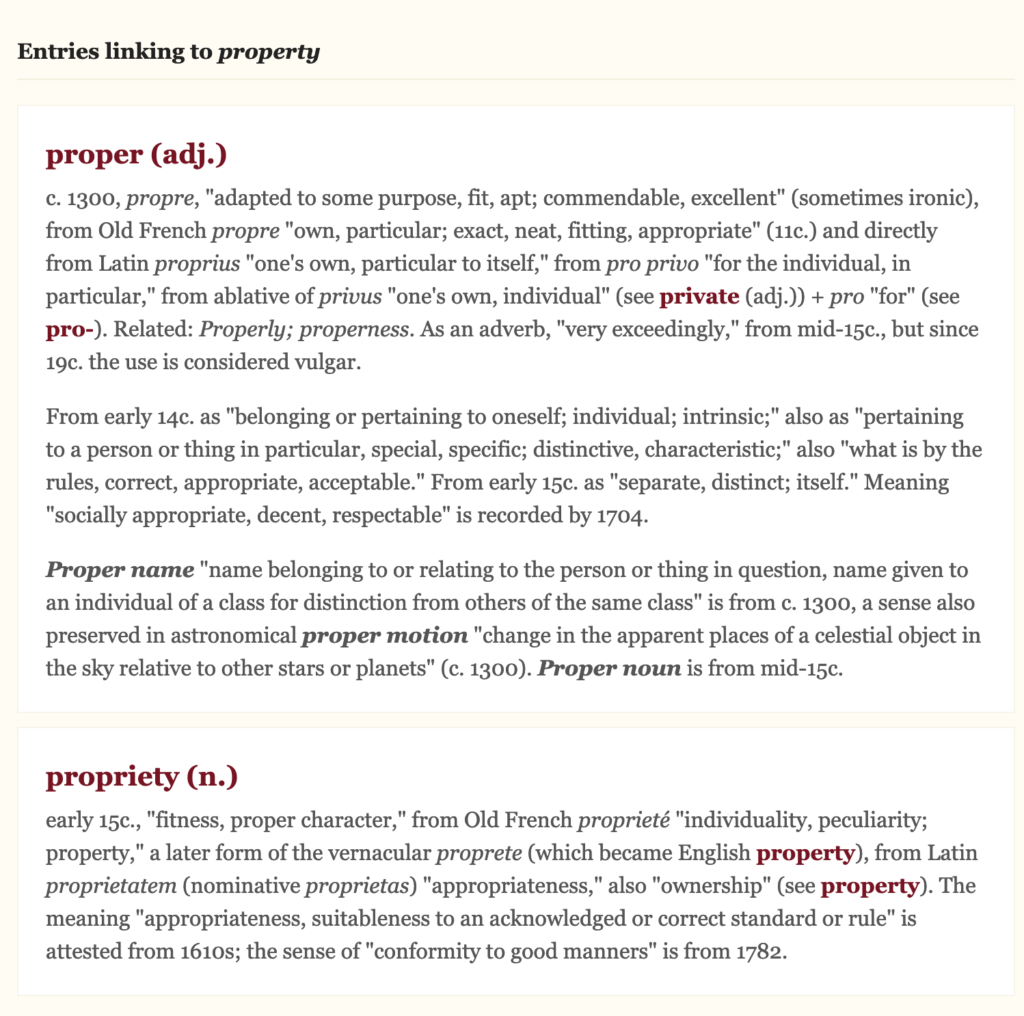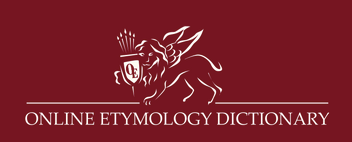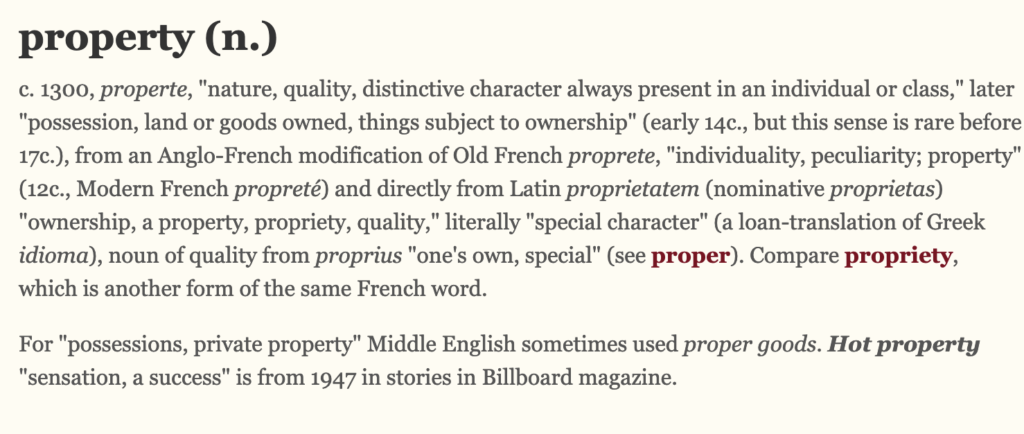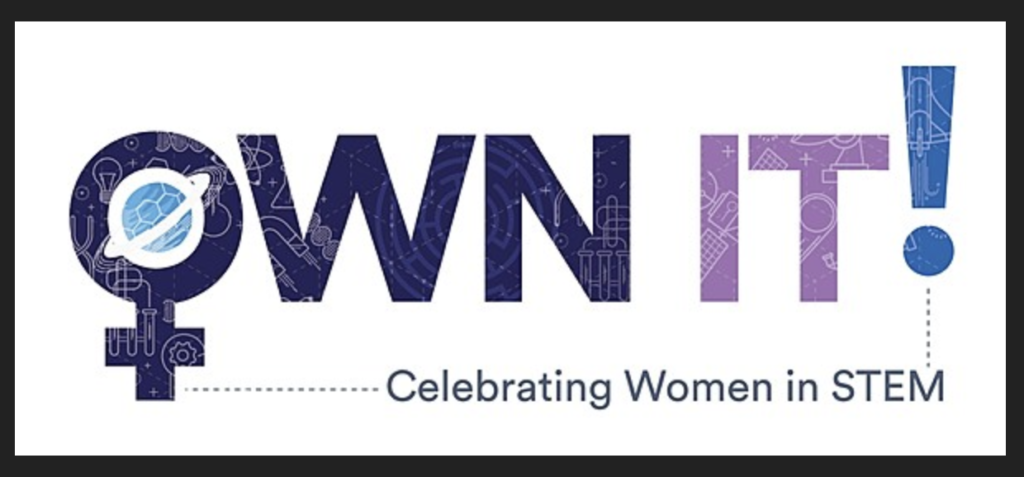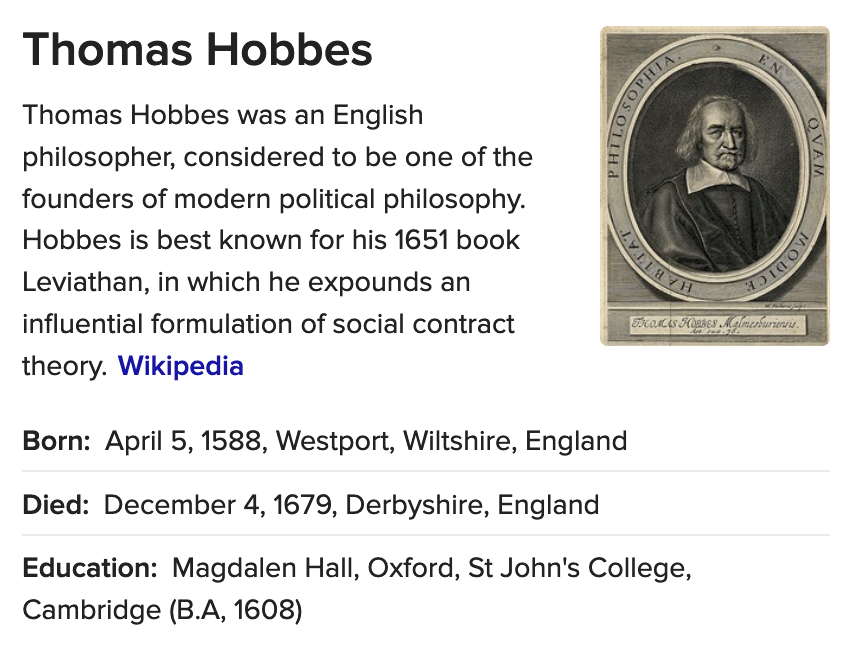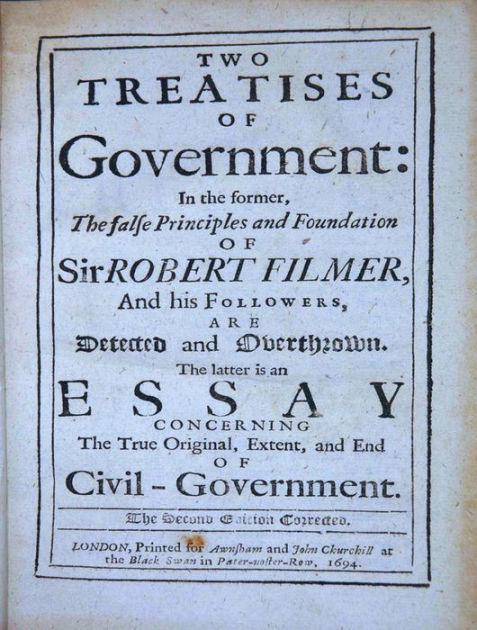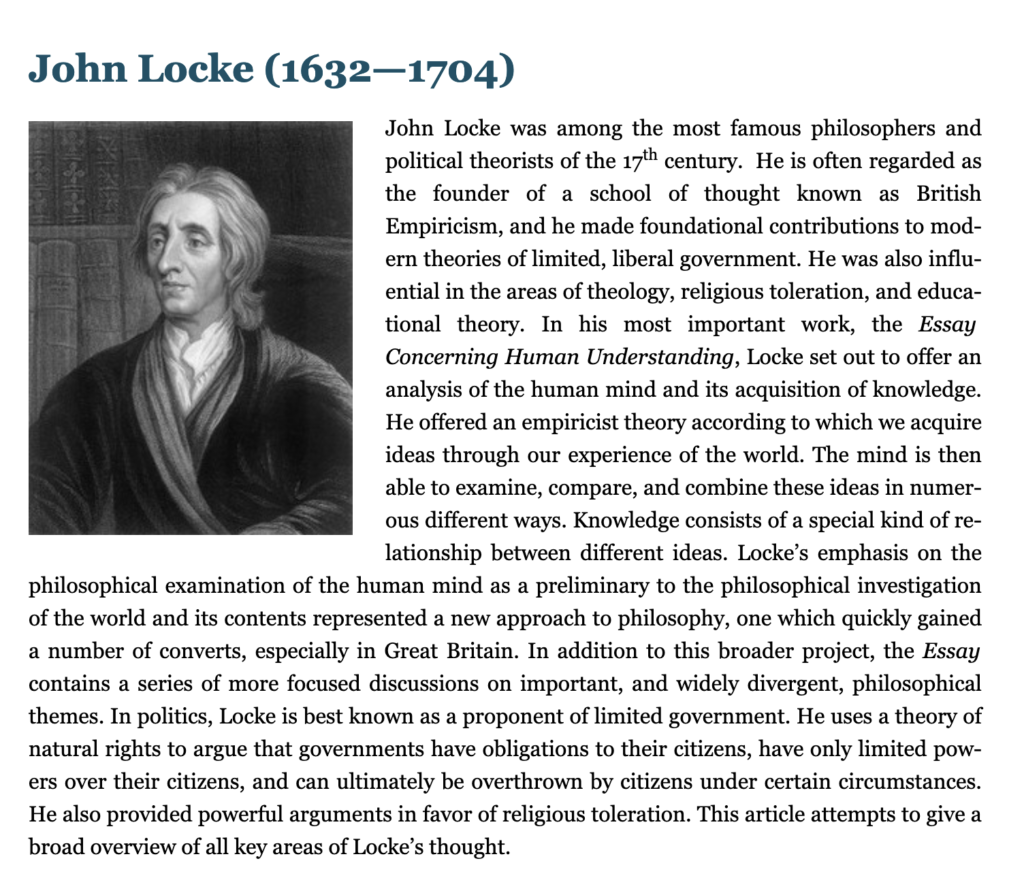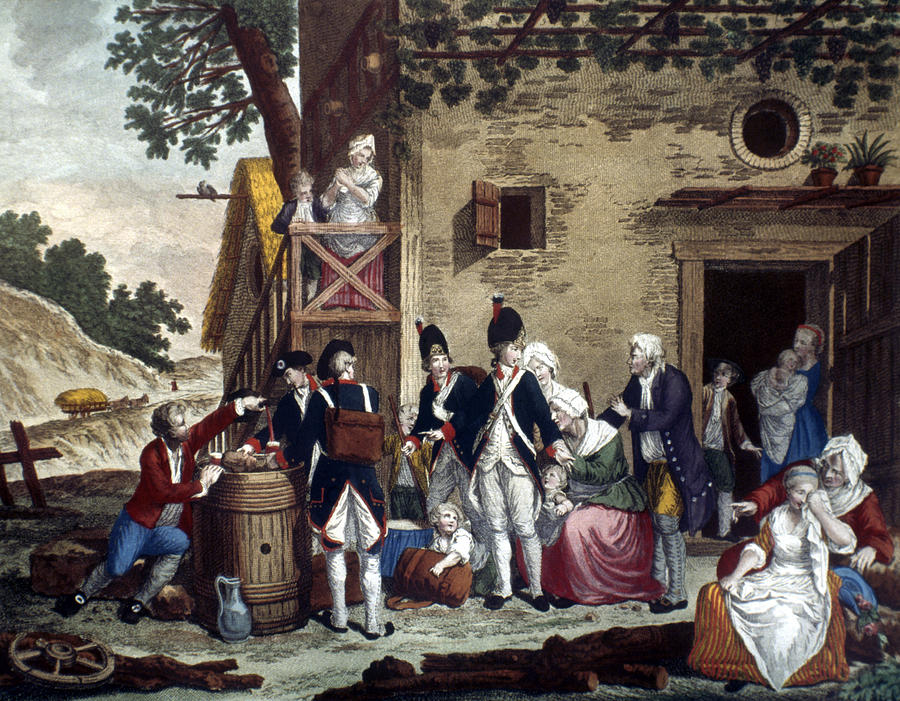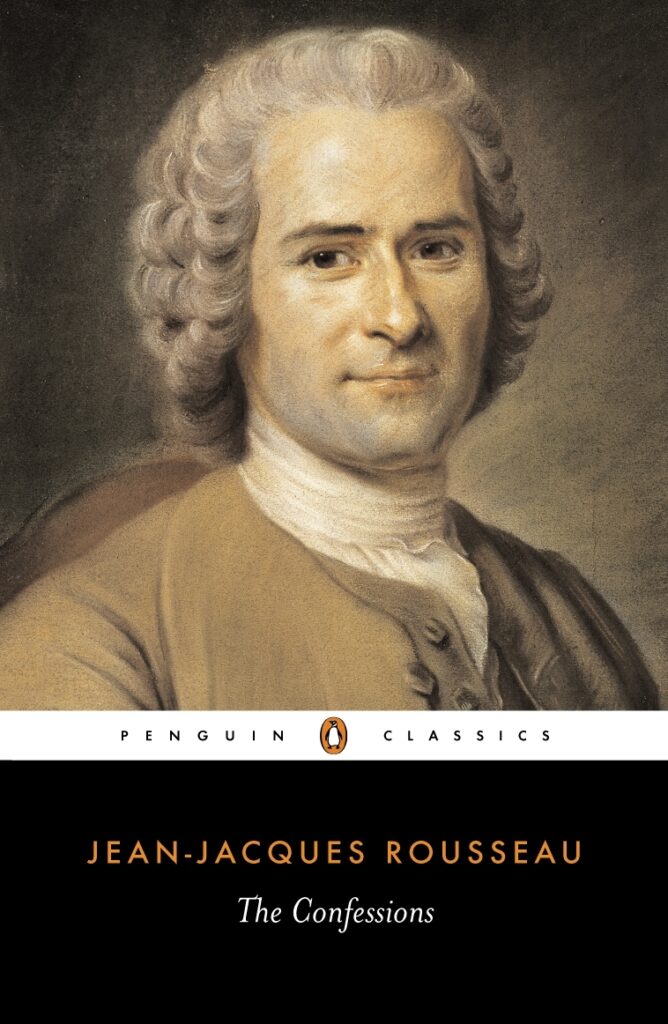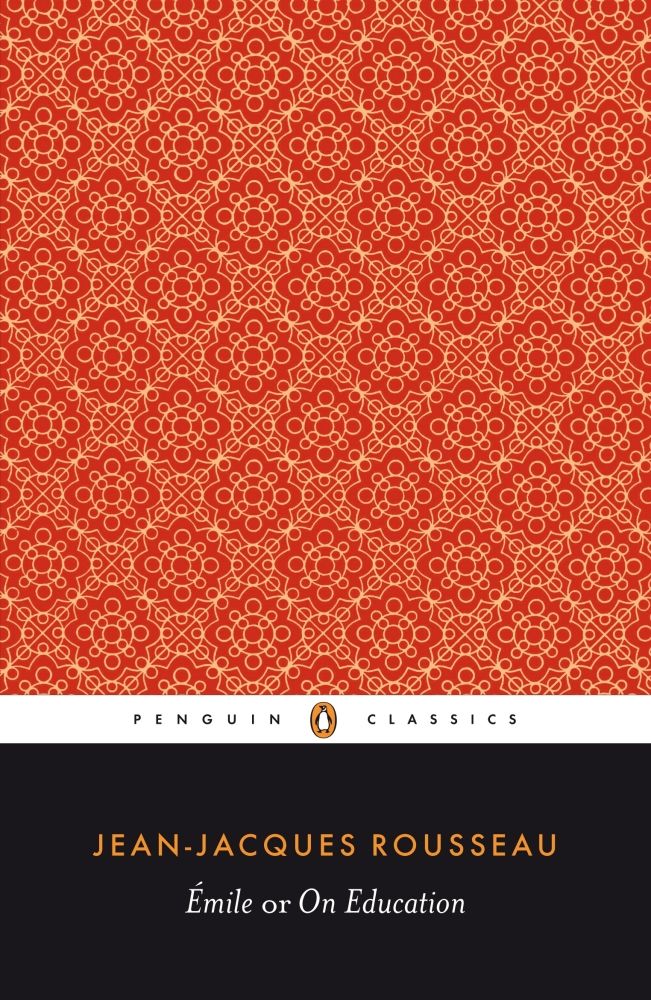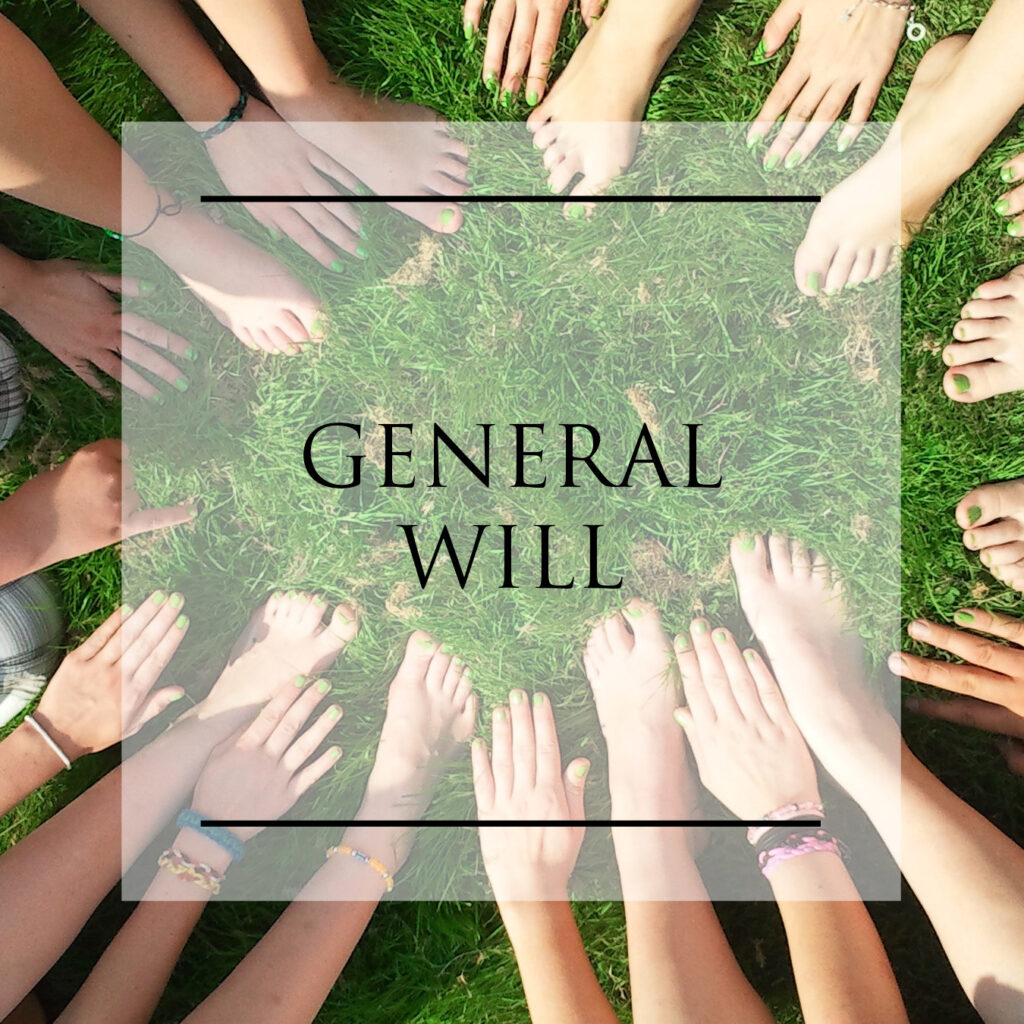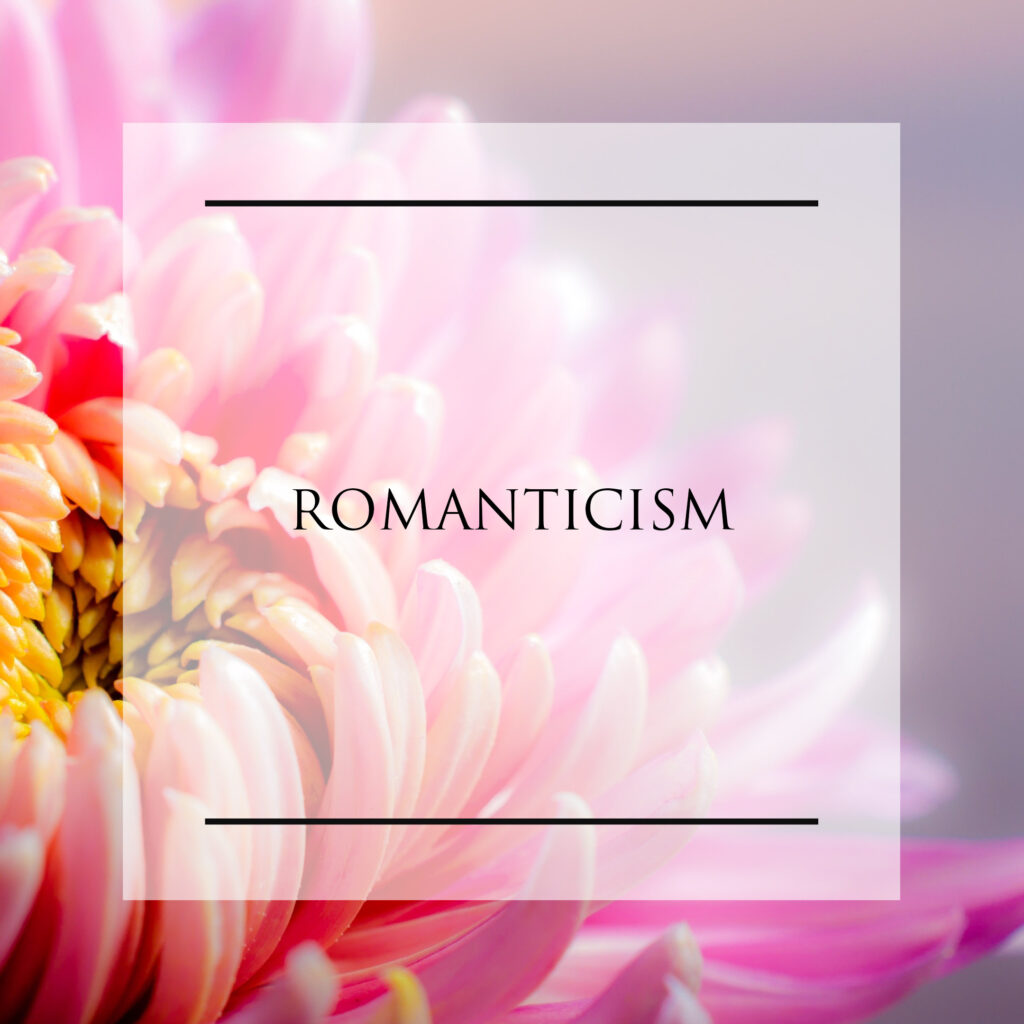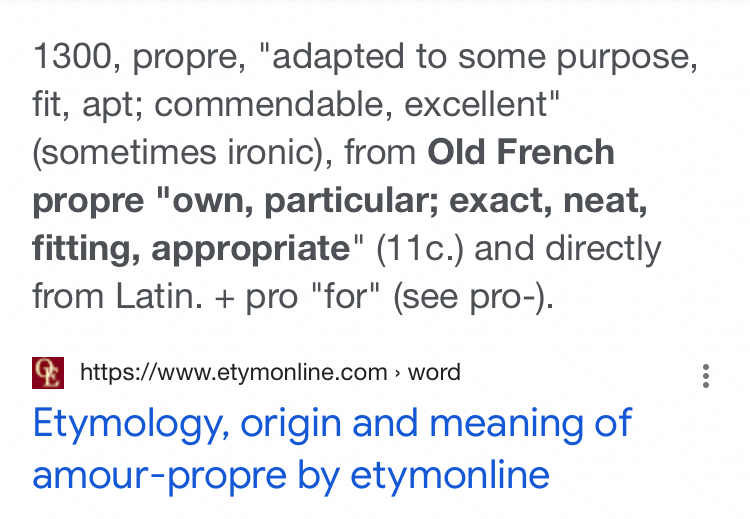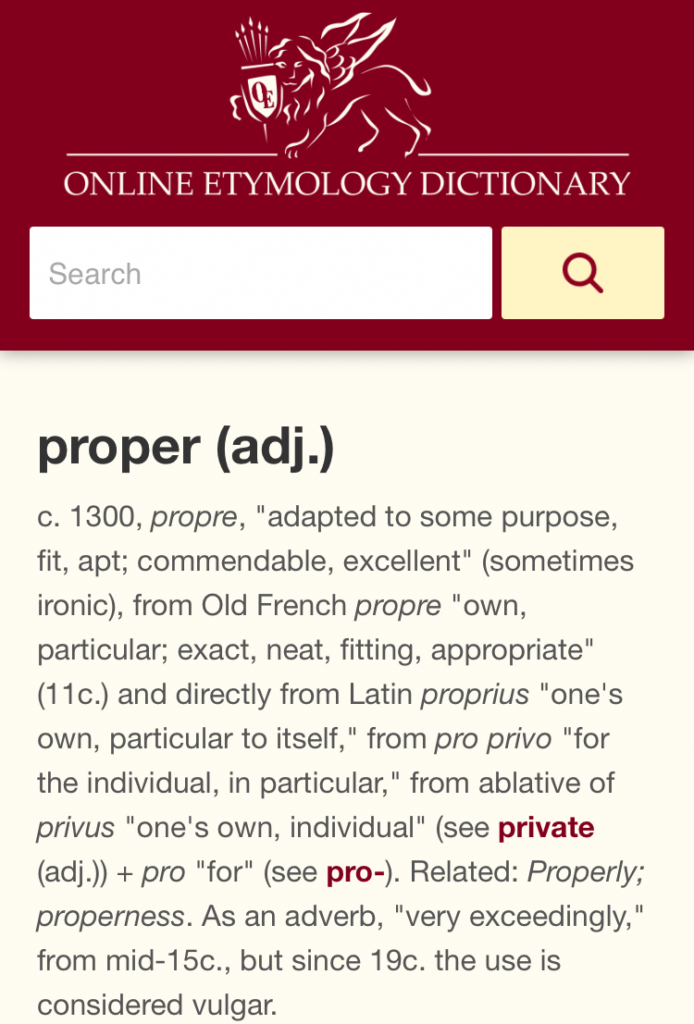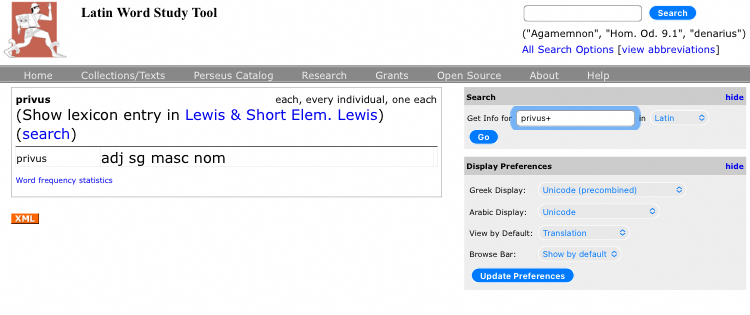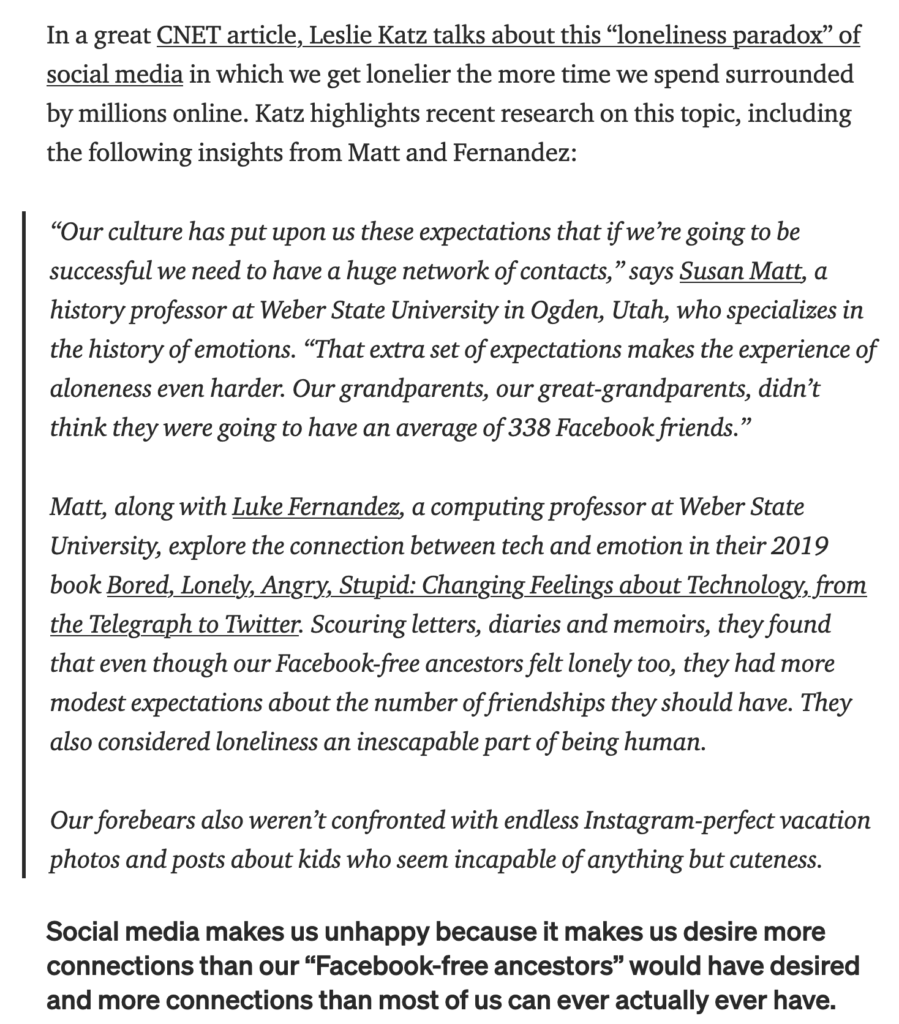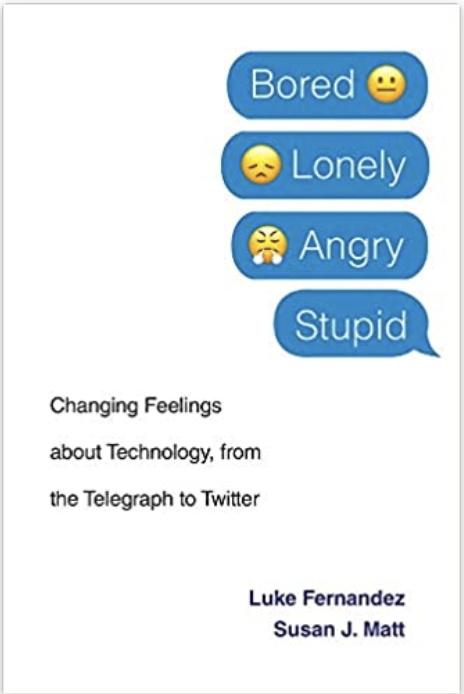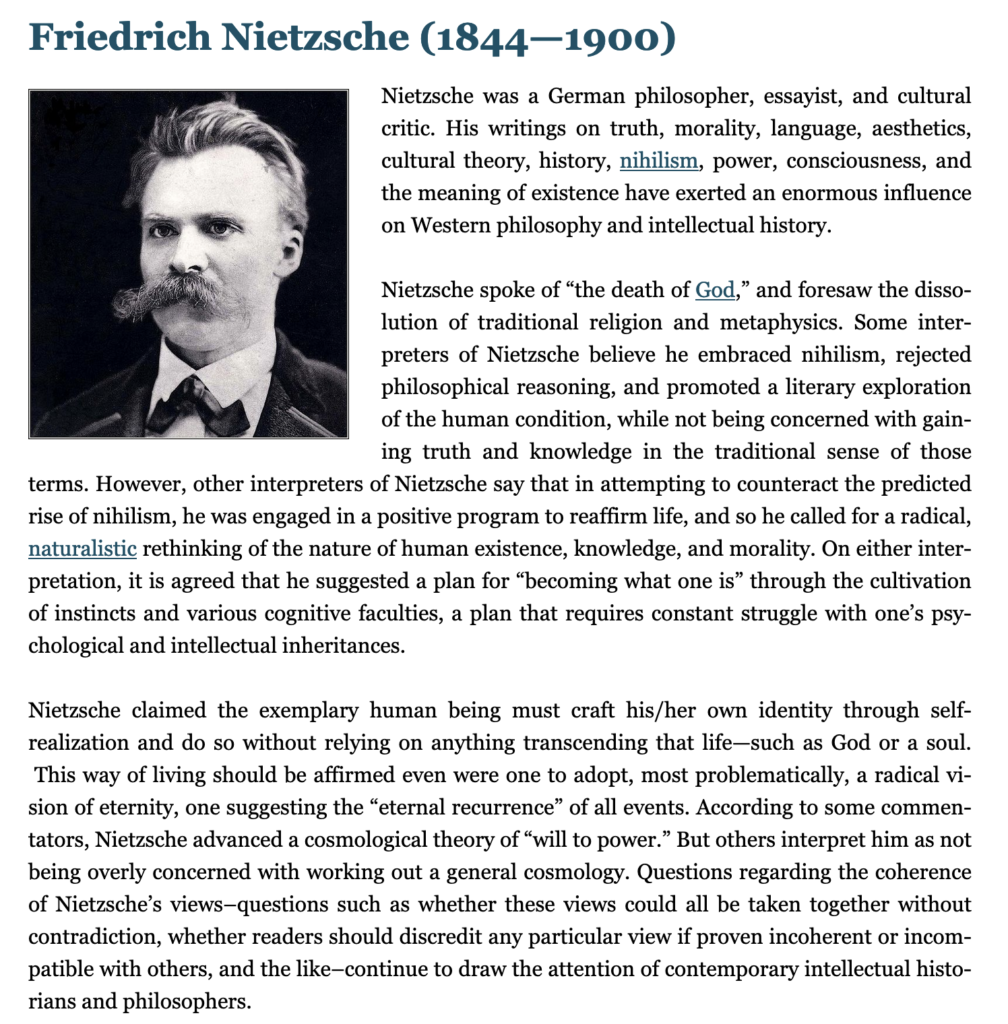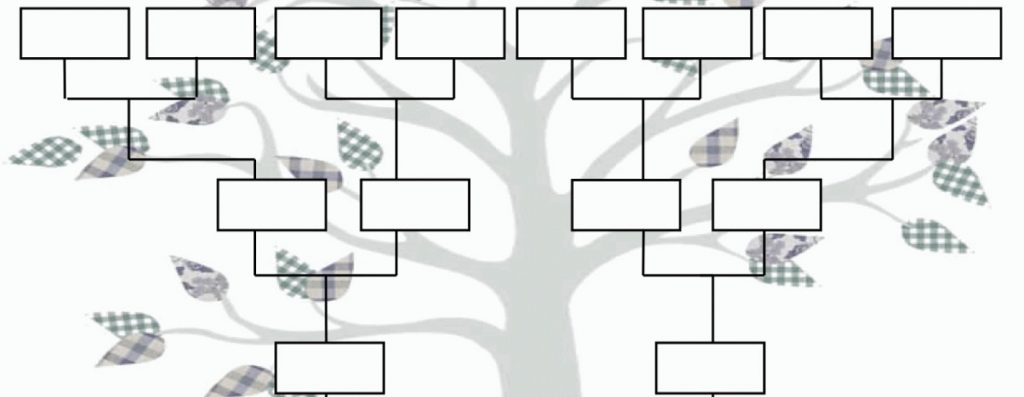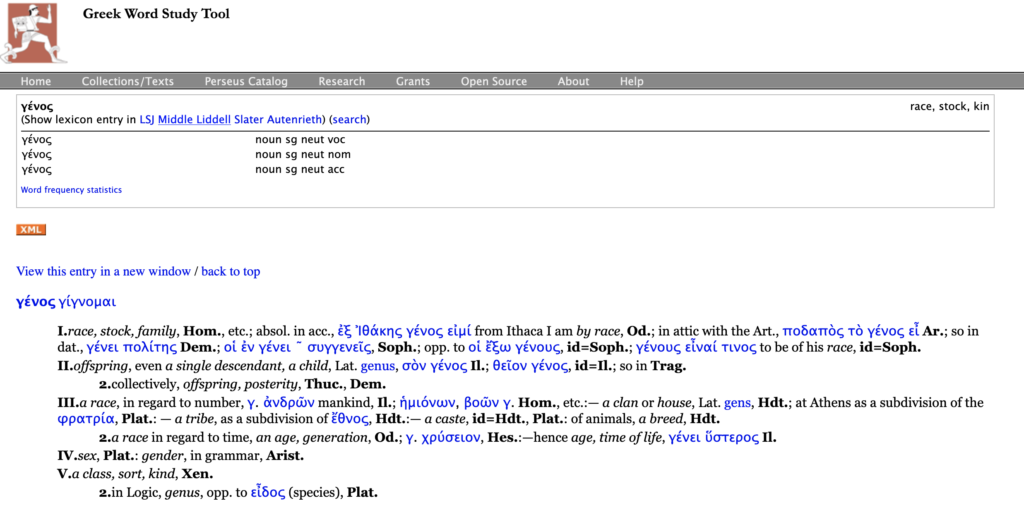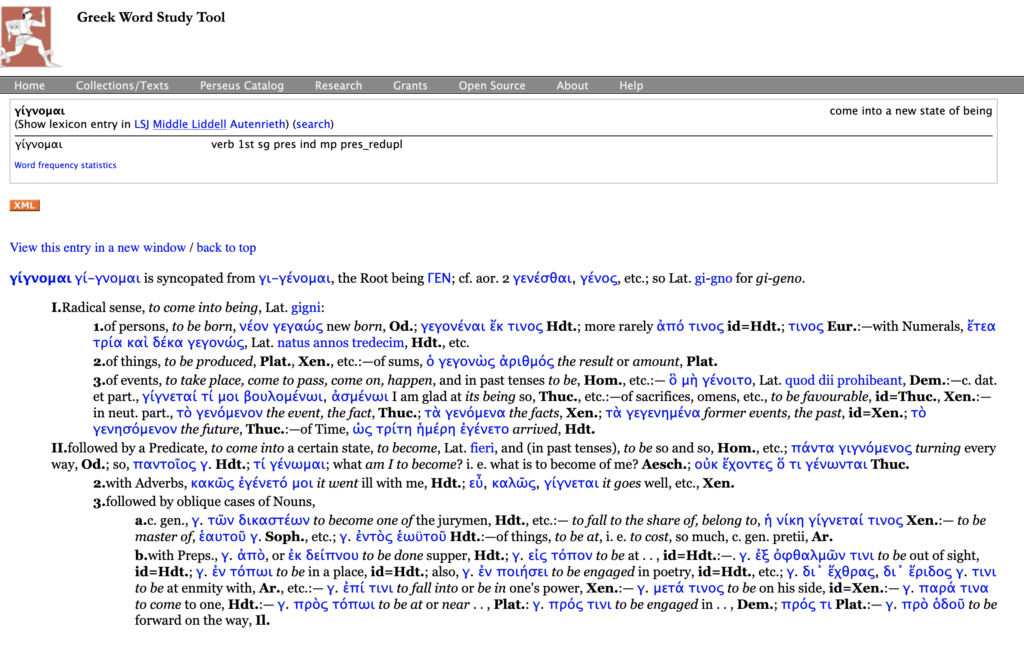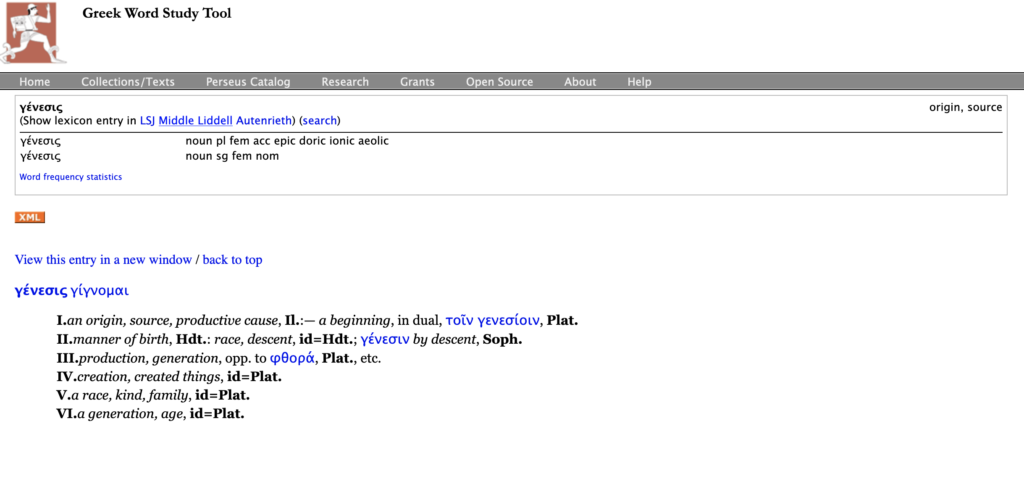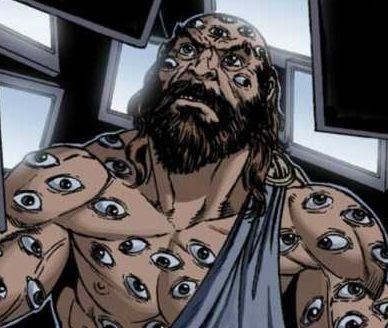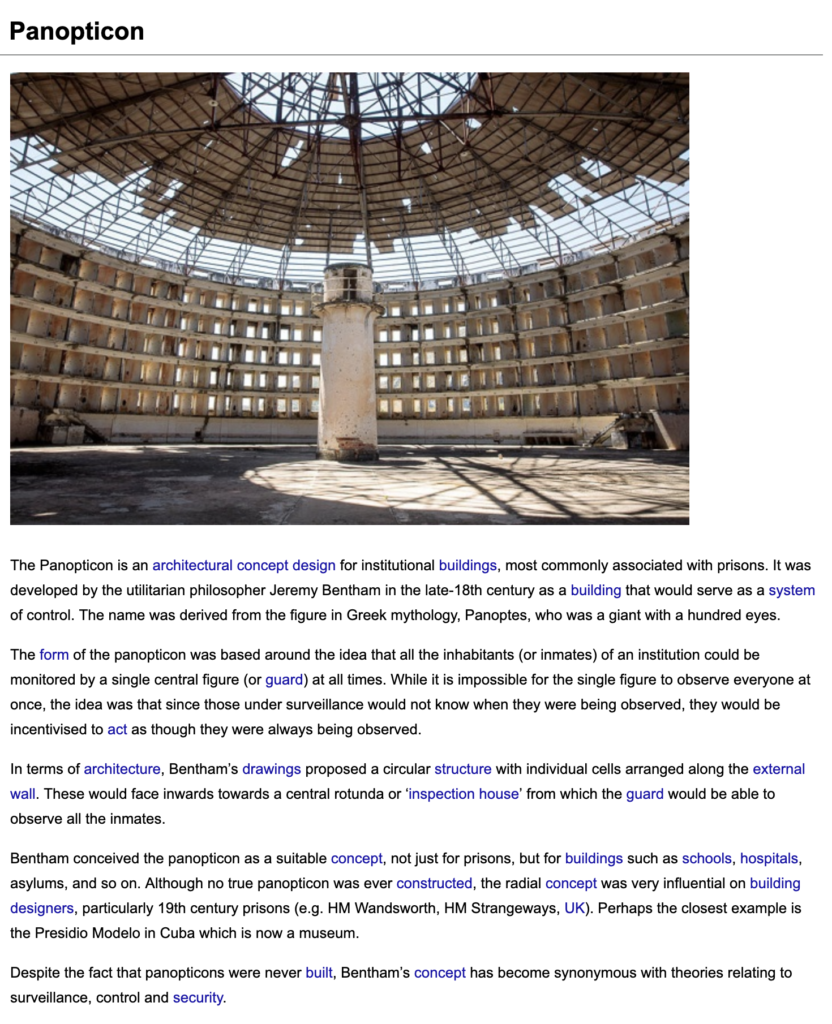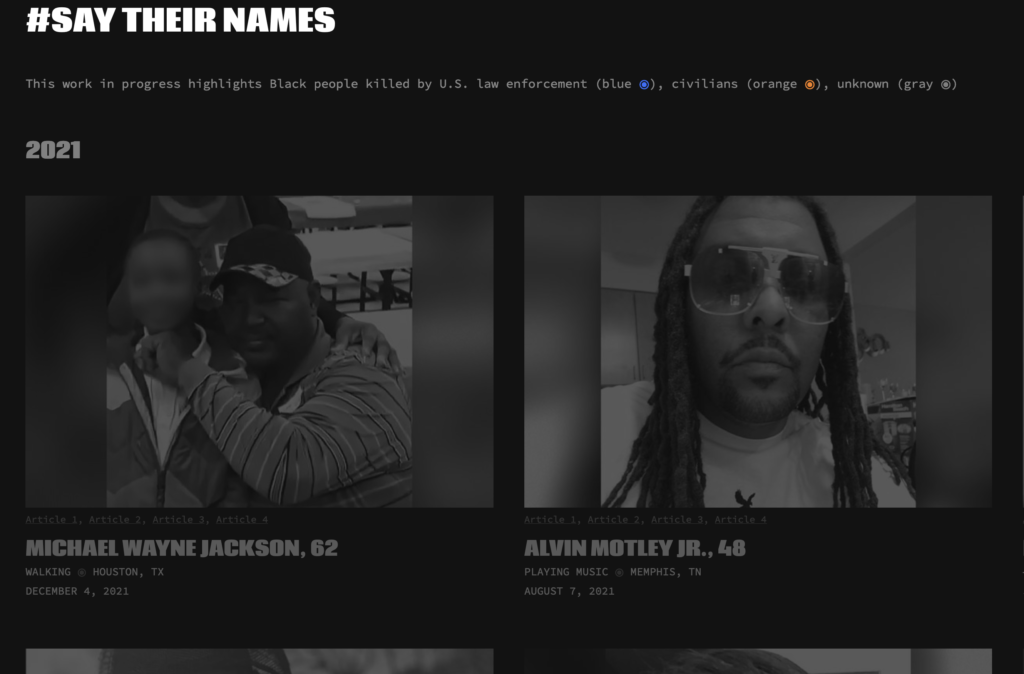2.2.22
What is the self?
A Quick Instagram Array
(Do any of these insights resonate?)
…and is myself MINE?
Being/Having/Owning/Owning up to it
(Our ownmost selves as mostly owning our own?)
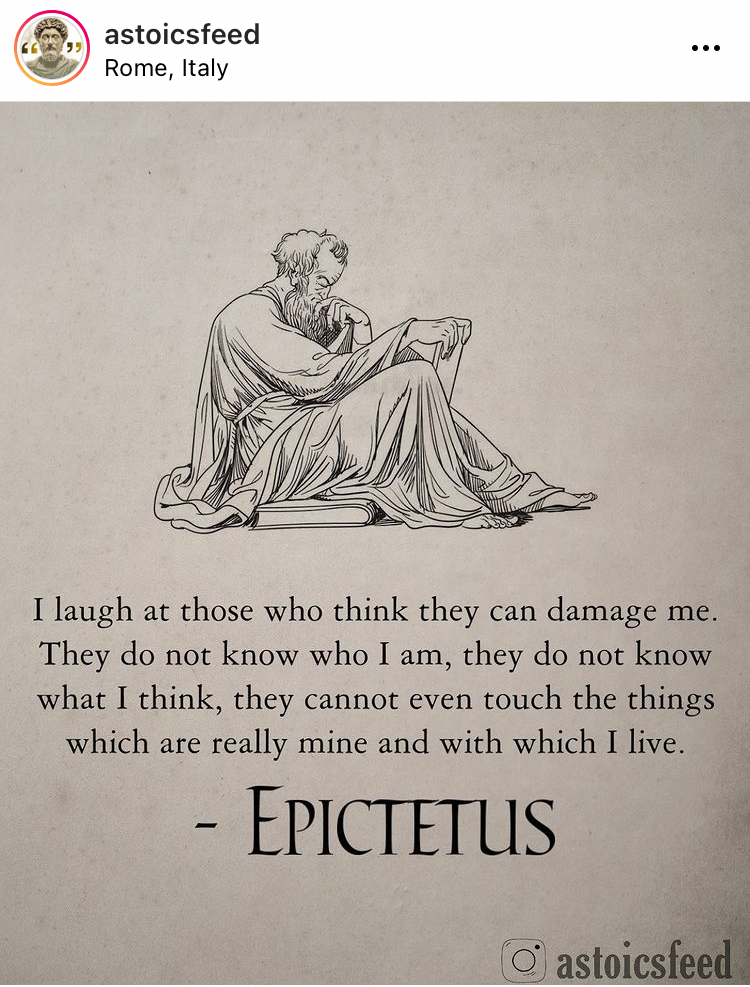
What is the relation between our “owmost” selves, being on our “own,” and “owning”? What should it be?
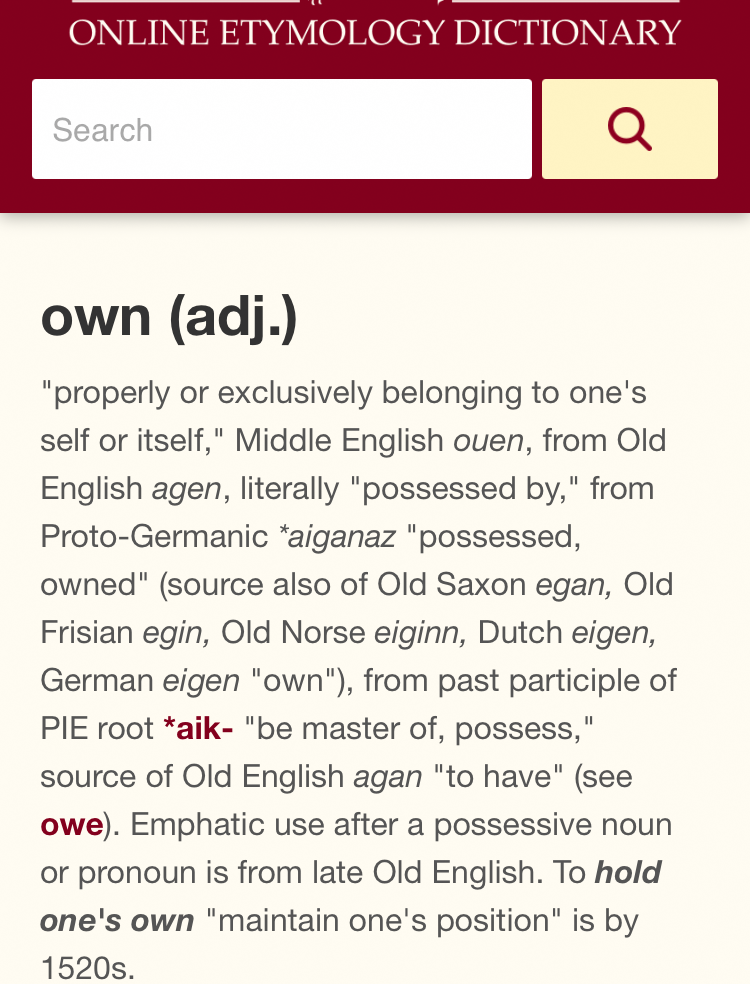
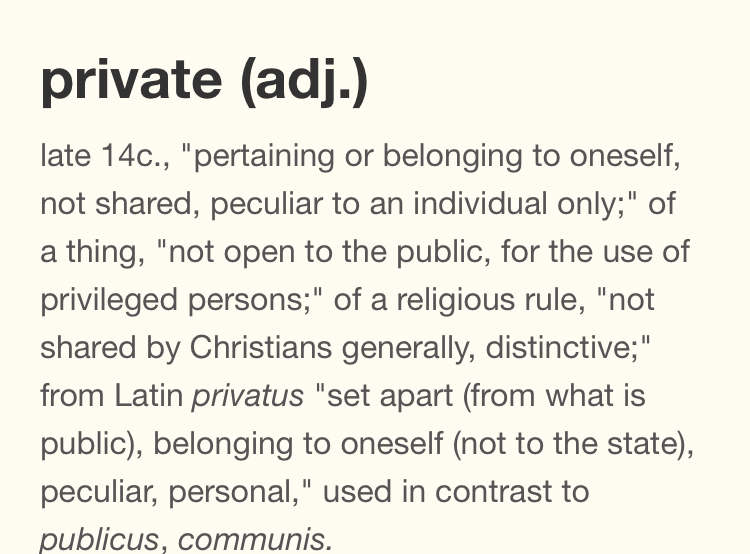
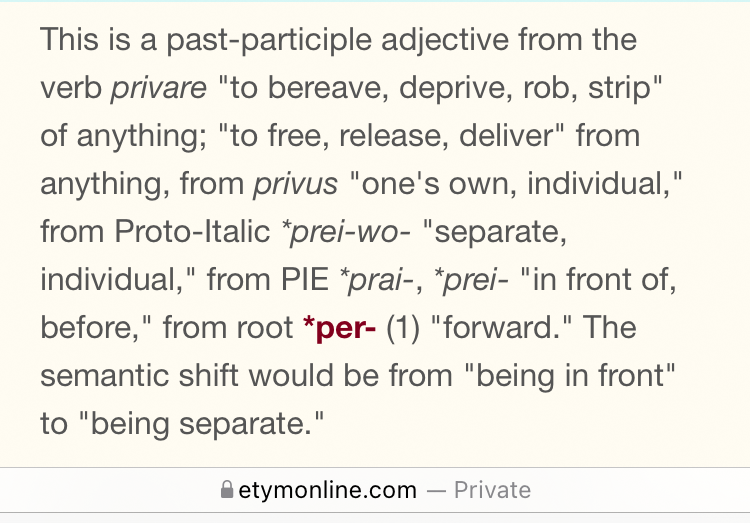
> Prei-wo = separate, individual (> being separate)


Proprius (Latin): one’s own
(pro + privo = for the individual)
[‘privo’ is Ablative form of PRIVUS = one’s own]
Privatus: set apart from what is public (v. publicus; communis); belonging to oneself (not to the state)
(See etymology of “private”…)


1.26.22
How many shared values do you want your government to try to foster? (And do you want them to make policies and/or laws to enforce these values? Do you want them to regulate (limit? tax?) people around upholding these values? And do you want to go further and have a government instill these values deep into people’s hearts?)
What are the dangers of government overseeing values too much? Too little?
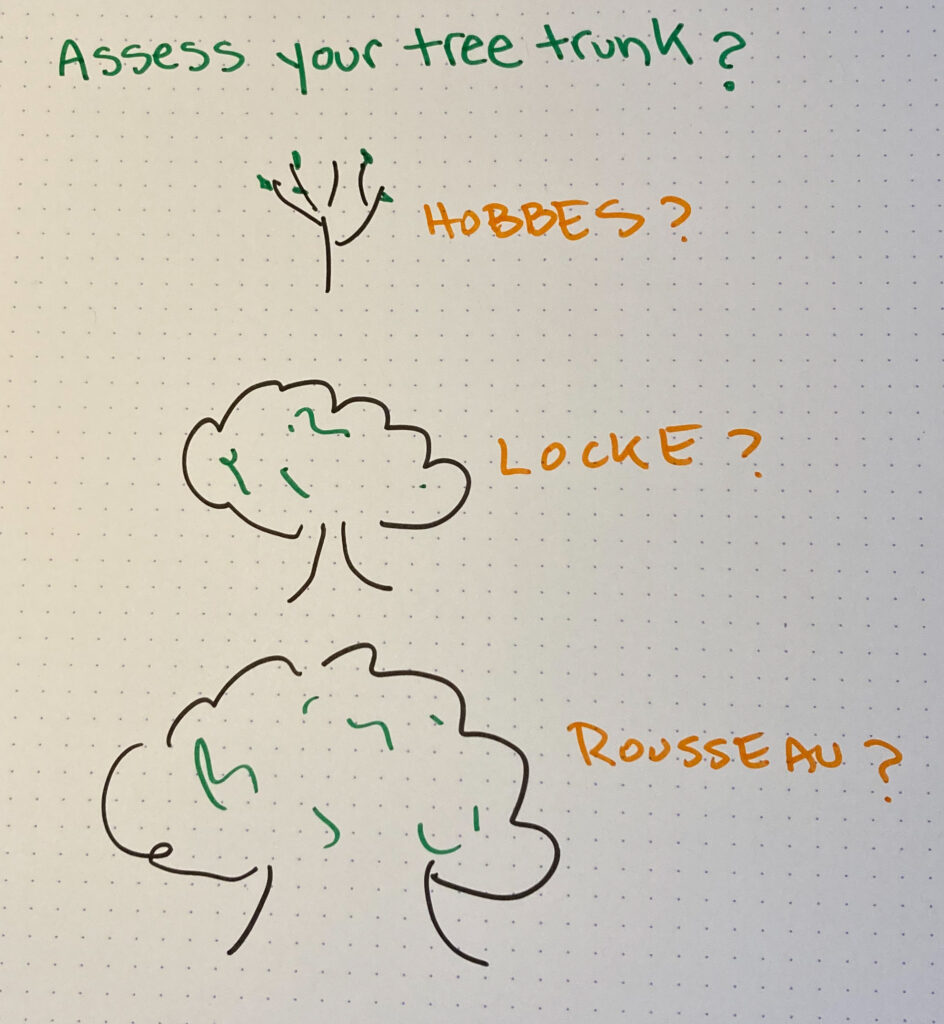


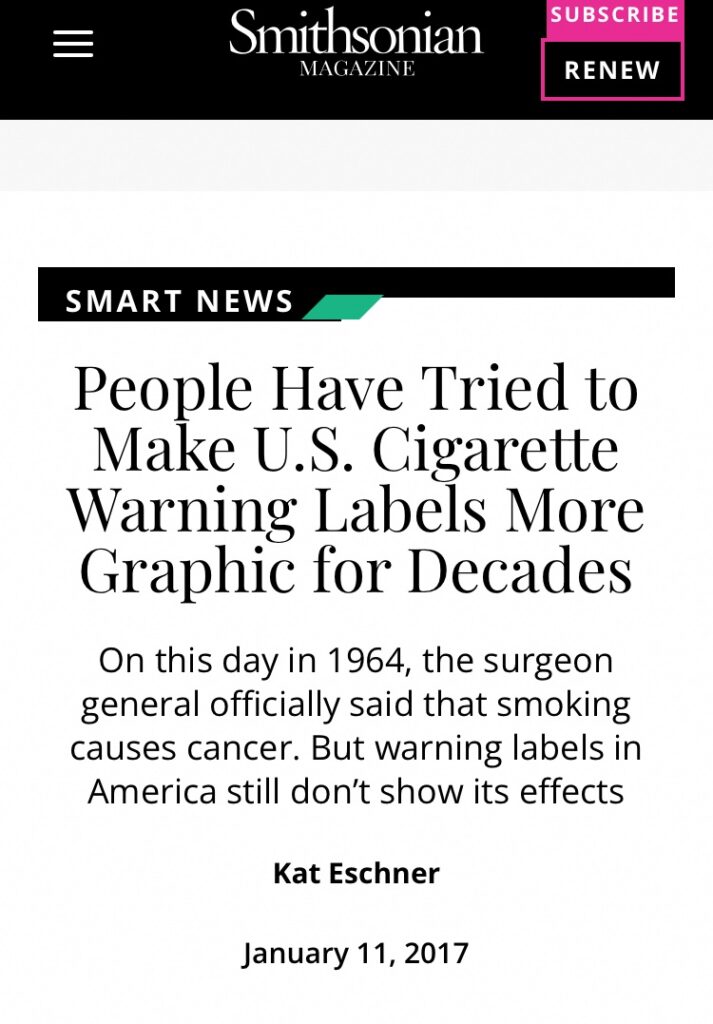
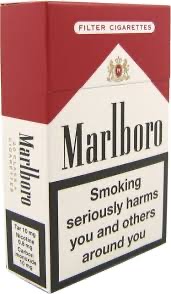

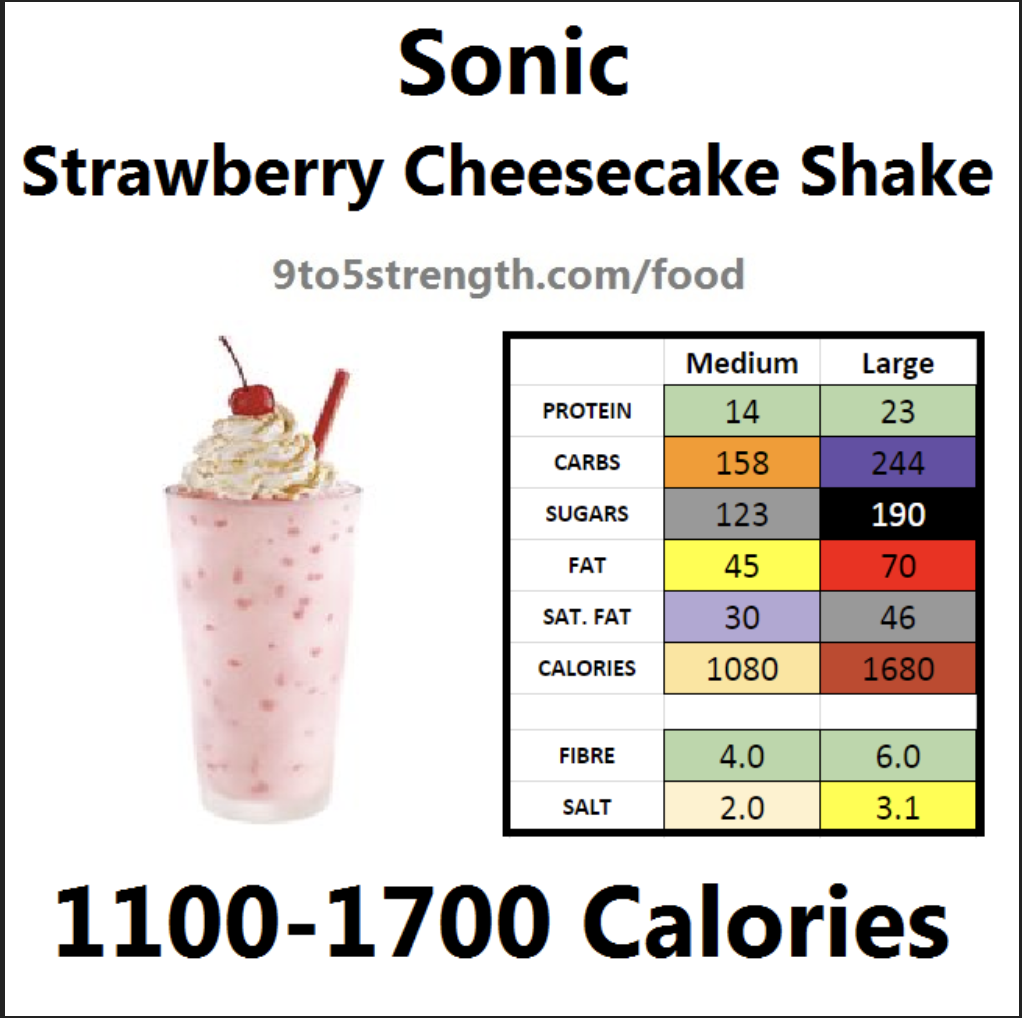
http://9to5strength.com/top-10-worst-milkshakes-in-the-us-uk/




Health-help or biopolitical hegemony?
(Thank you so much for the support, or thank you very little for fat-shaming?)
1.19.22
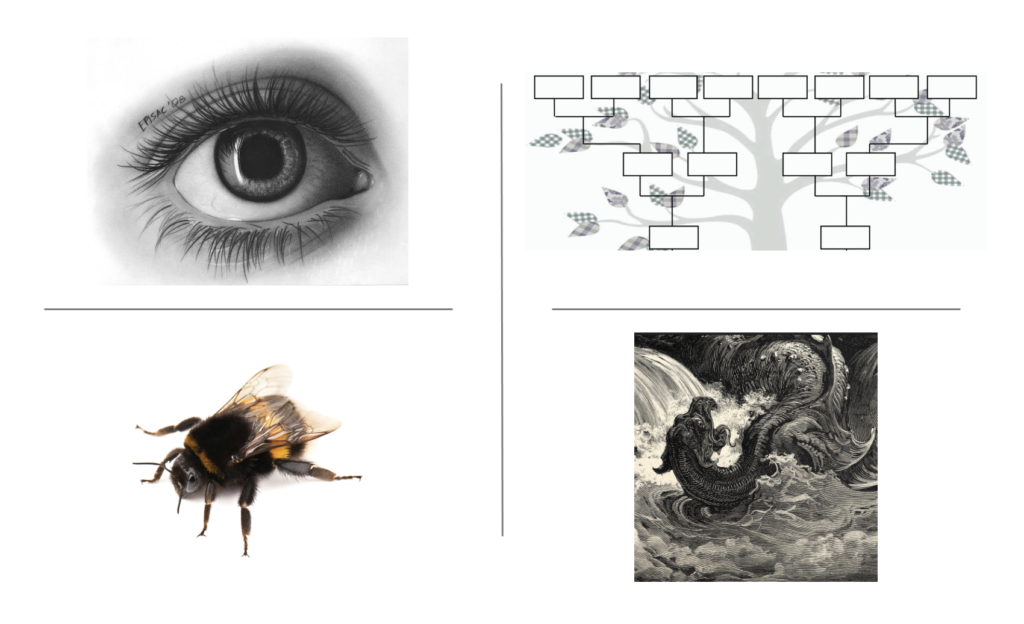
Download Hobbes-Locke-Rousseau course reading on Canvas here (sign in required)
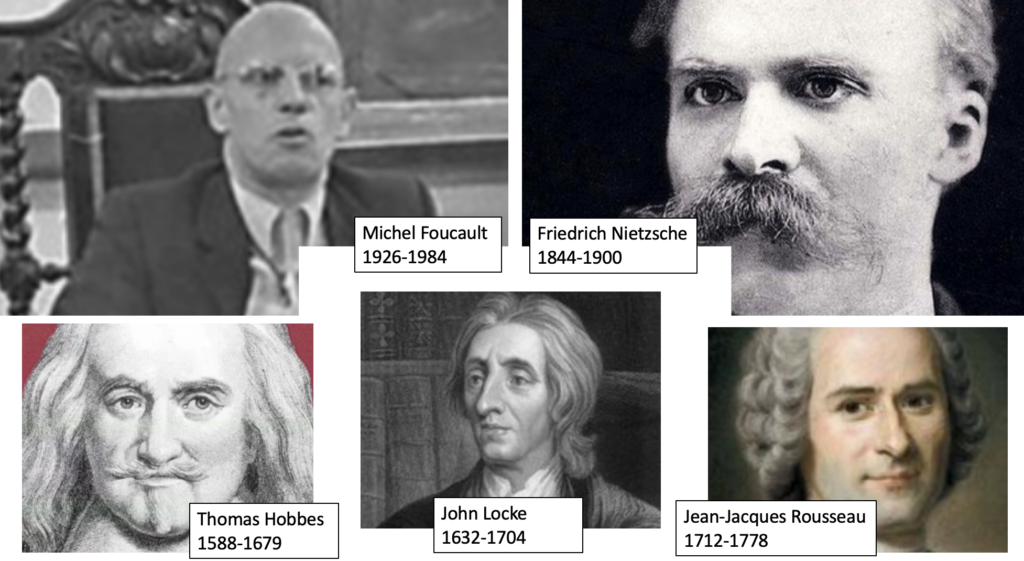
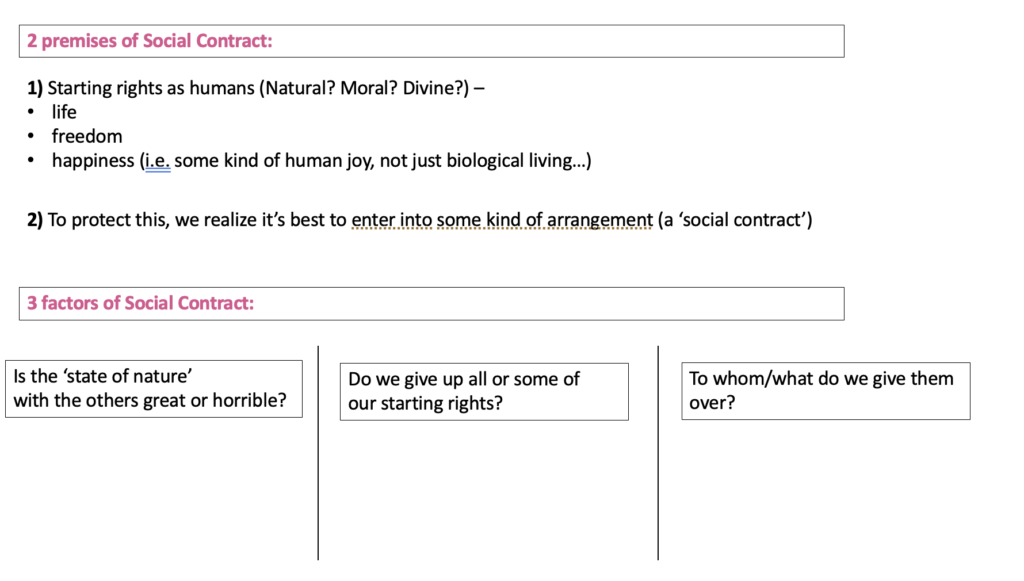
Hobbes on “Bee Life”: Unlike humans…
…they live “sociably” with no hatred or envy
…their private and common goods are one and the same
…they don’t think they’re wiser than the neighbor bee, and they don’t aim to reform and innovate (“I can do it better!”) which means: no civil wars
…they lack the “art of words” needed to be con-artists (liars, sneaks, cunning…)
…they have no sense of being wronged, so don’t ever feel offended by the other bees
….they agree naturally (vs. by contract)…
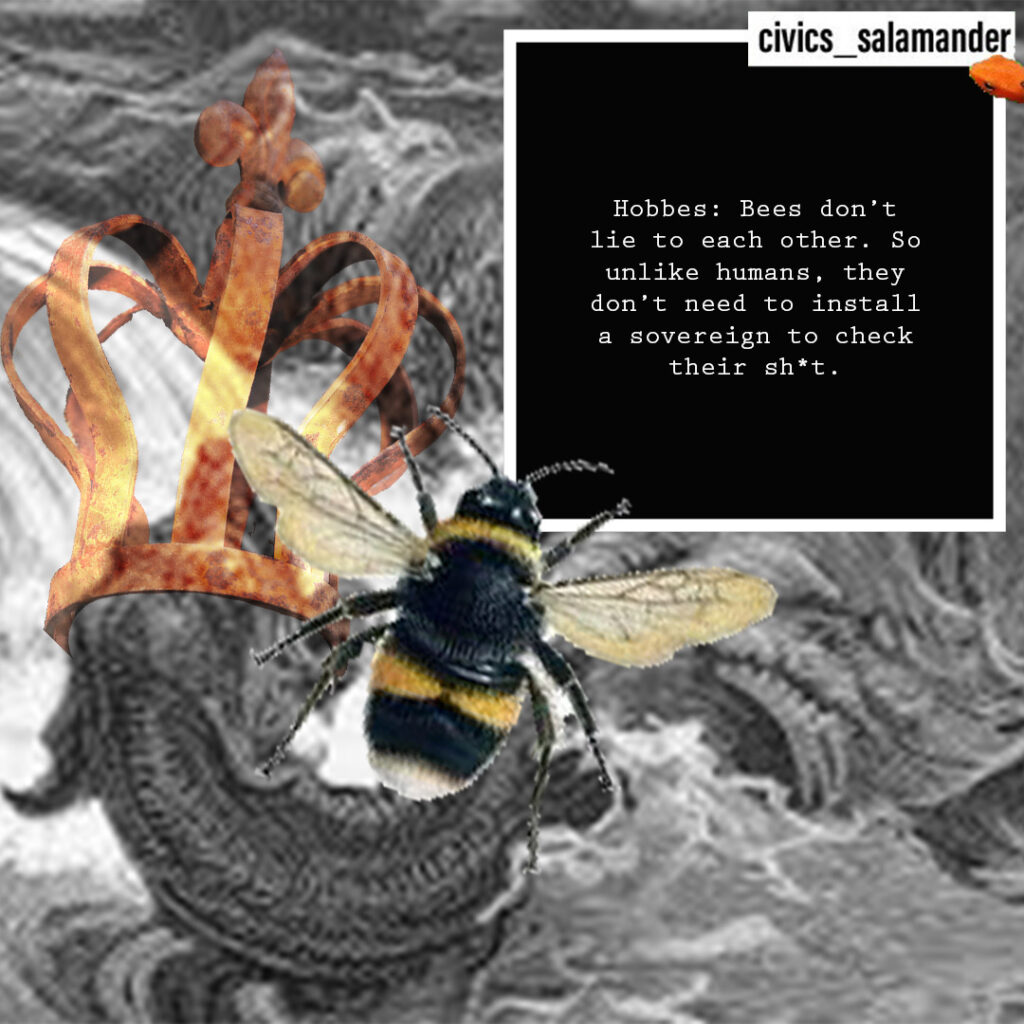
The only way to erect [a] common power, as may be able to defend them from the invasion of foreigners, and the injuries of one another…is to confer all their power and strength upon one man, or upon one assembly of men, that may reduce all their wills, by plurality of voices, unto one will…”
Thomas Hobbes, Leviathan (1651)(from Political Thought, eds. M. Rosen and J. Wolff, 58 (Oxford: Oxford University Press, 2012)
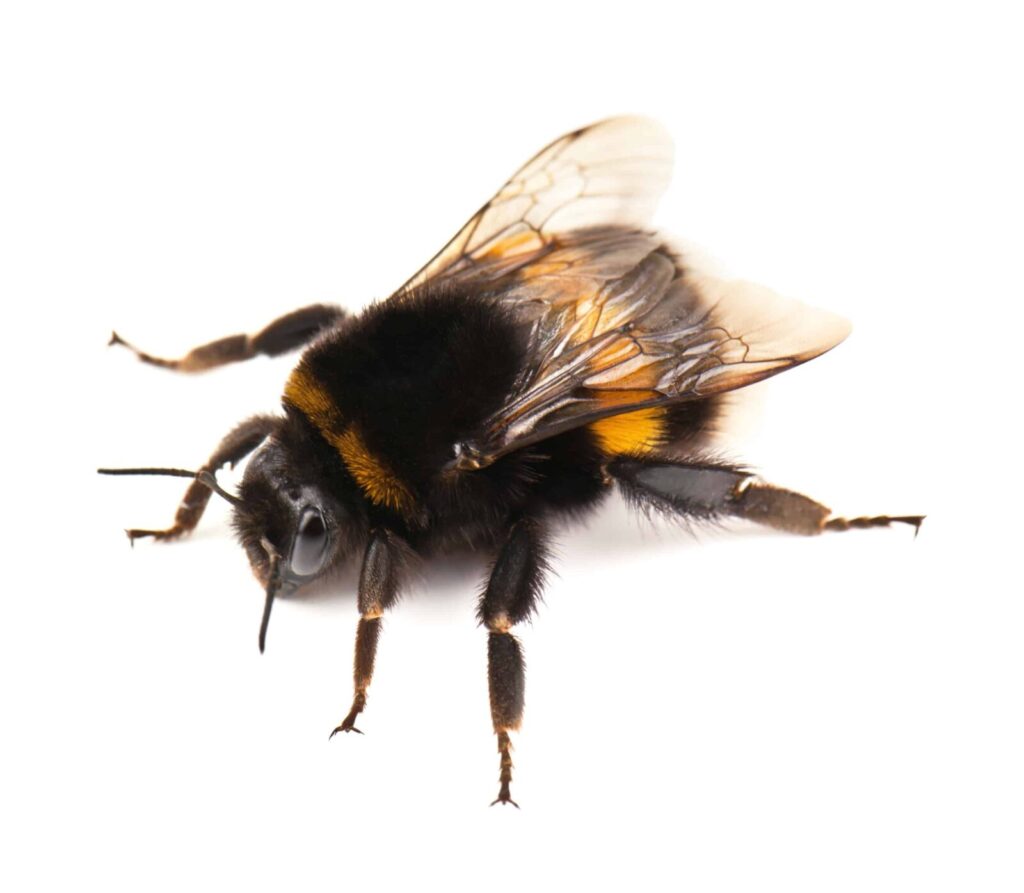
Be like the bee? Hobbes says “Good Luck”!
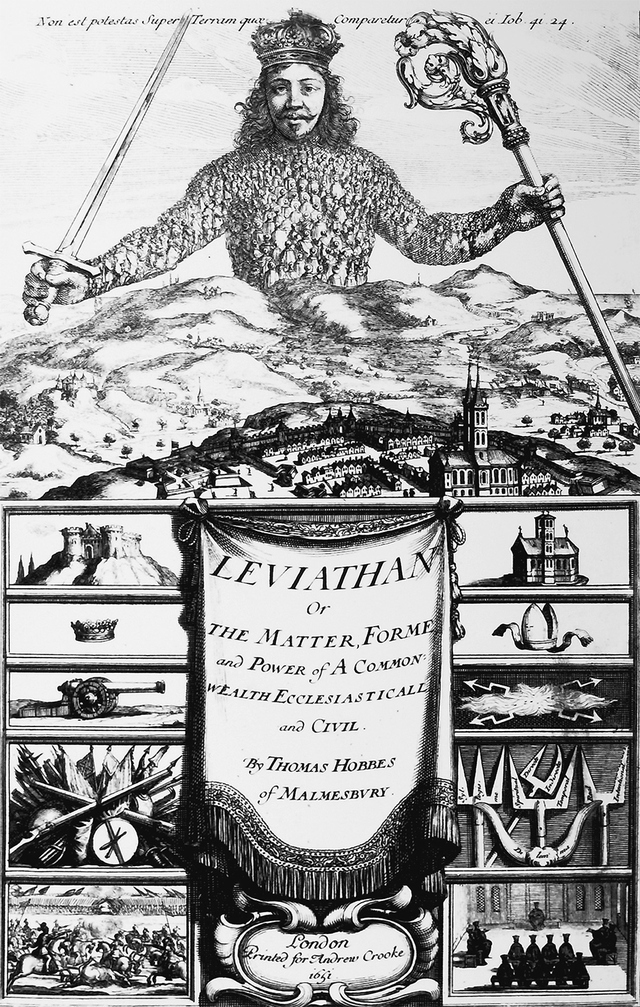
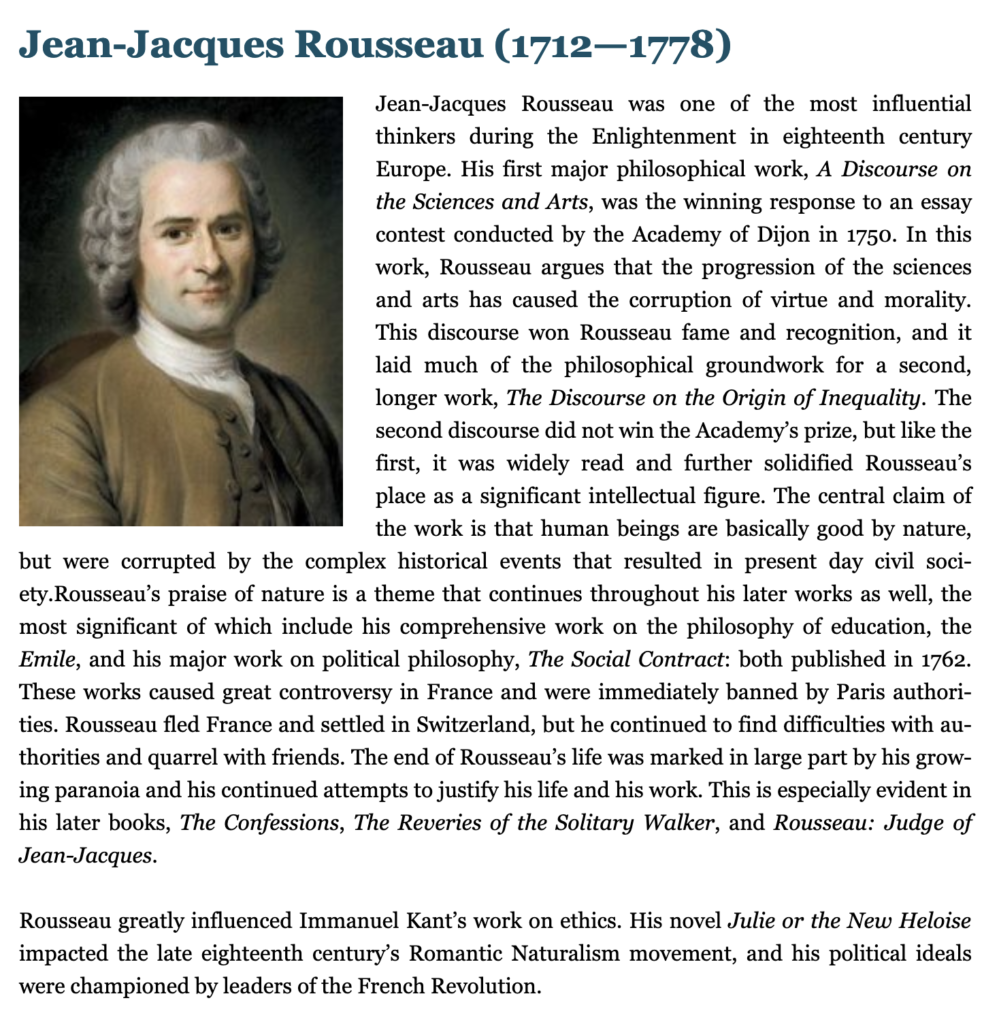
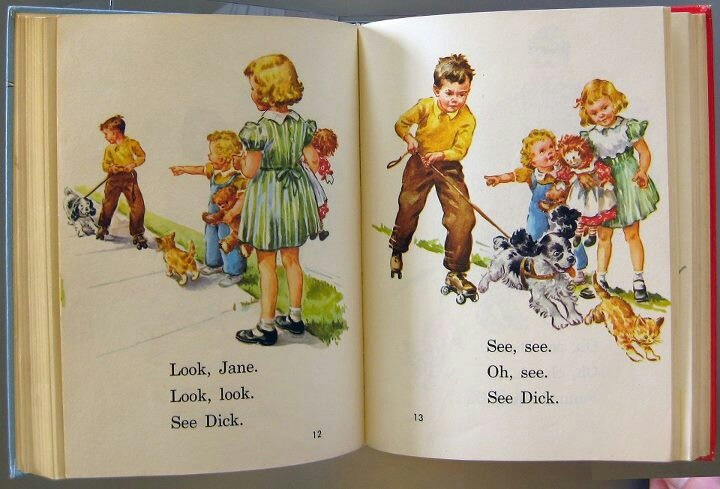

AMOUR-PROPRE: When we’re kind of an ass…
Man is born free; and everywhere he is in chains…”
Rousseau, The Social Contract (1762)
Rousseau on “amour propre”: a self-indulgent sort of self love that he thinks grows in our hearts and minds as an artificial outgrowth of human society & culture and the unhealthy ways it invites us to compare ourselves to–and want to outdo–others.
(vs. the healthy love of self, amour de-soi based on basic needs, not artificial desires…)
Download Nietzsche reading here (Canvas sign-in required)
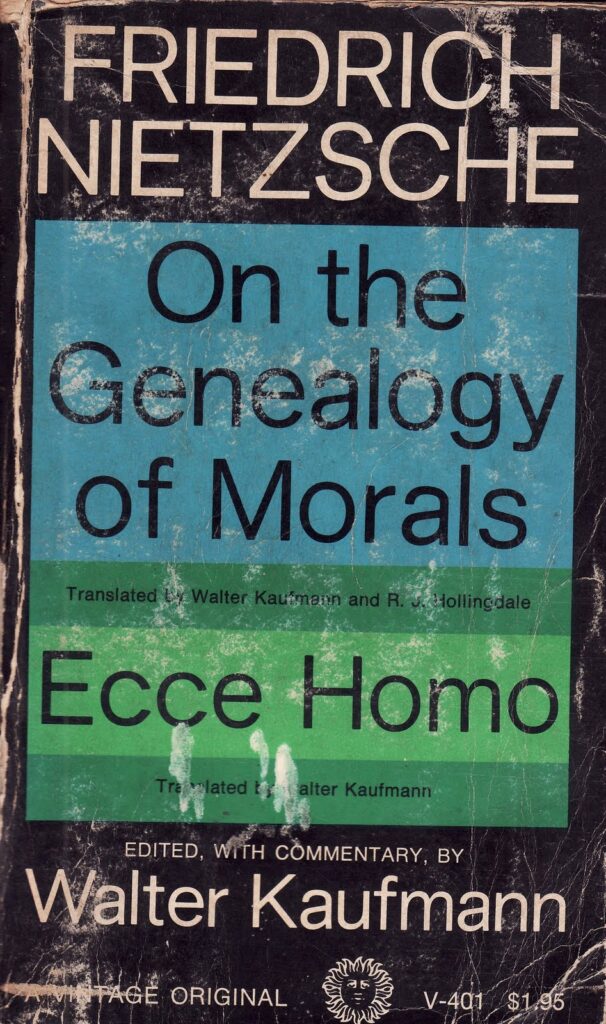
GENEALOGY…
Download Course Canvas reading on Foucault on Biopower here (sign in required)
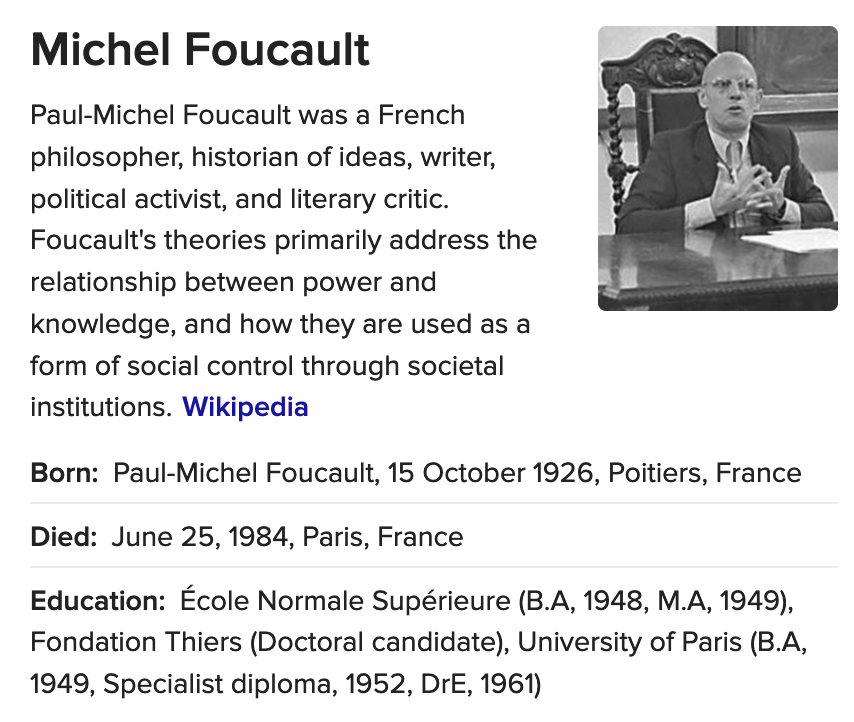
Bentham’s Panopticon (1789)
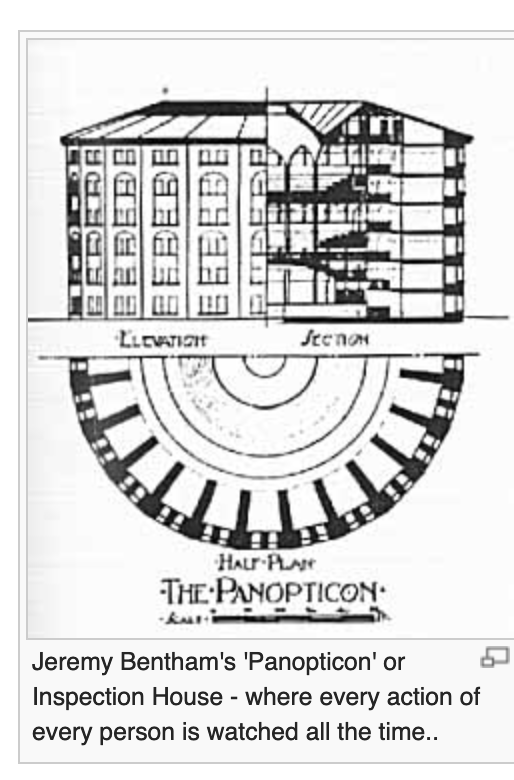
Web sources for pictures for 1.19.22 (if not noted above): The eye drawing is from hellaheaven-ana.blogspot.com; the Gustave Dores Leviathan rendering can be found on Wikipedia– the above image is cropped from https://www.majesticprints.co/listing/245870081/gustave-dores-destruction-of-leviathan; bratty little girl pic from https://www.huffpost.com/entry/6-easy-ways-to-create-a-bratty-entitled-child_b_3875945
1.12.22
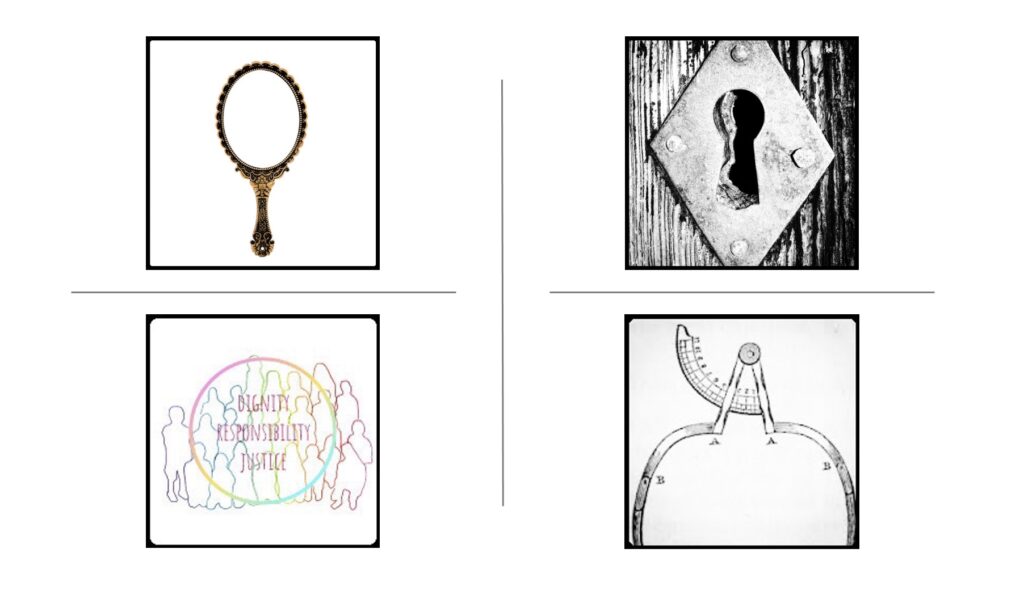
Pluralism & Multiculturalism | Politics of Recognition | “Friendship Frames” | Agonism | Responsibility | Identity | Inequity
- Connolly/ PDF
- Bonilla-Silva on racism without racists: colorblindness/ PDF
- [Optional: Levinas_ethics_infinity]
- [Optional: Pessin essay on “America’s Love Problem”]
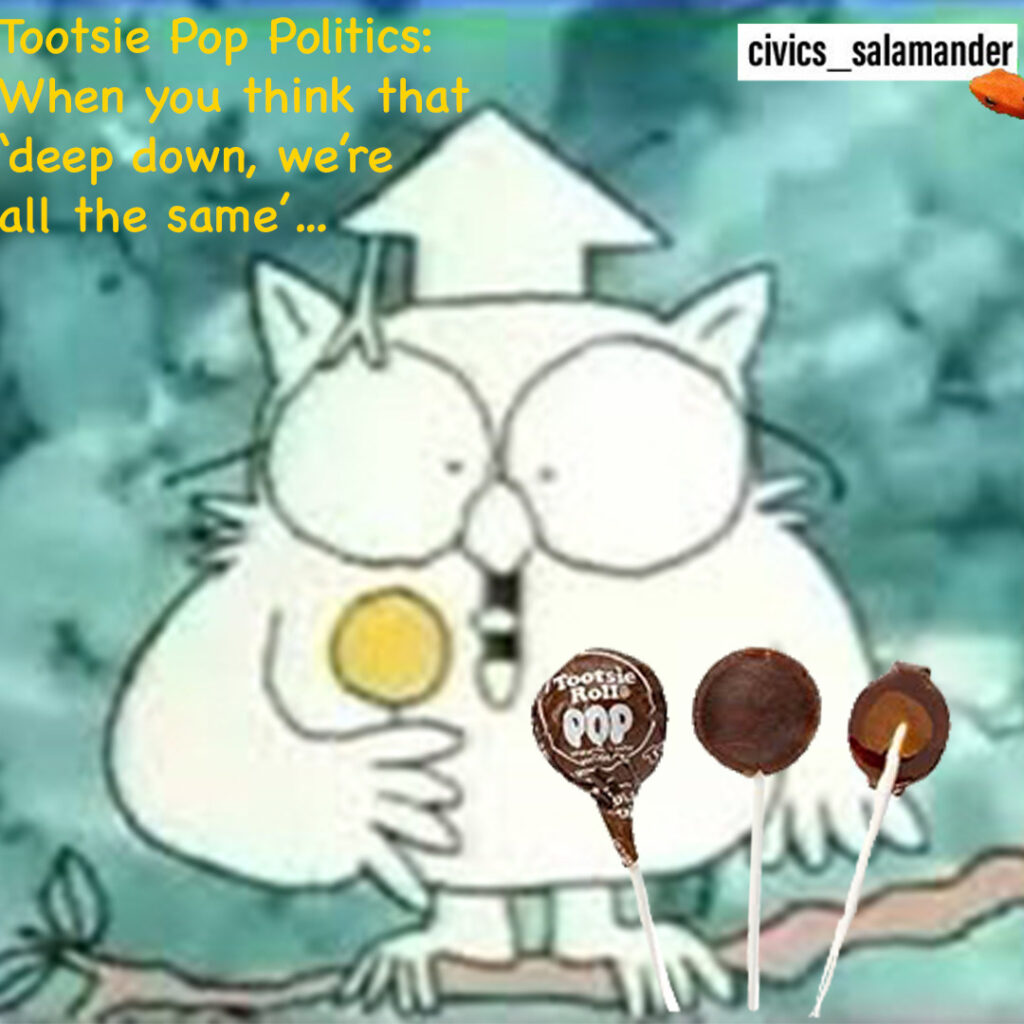
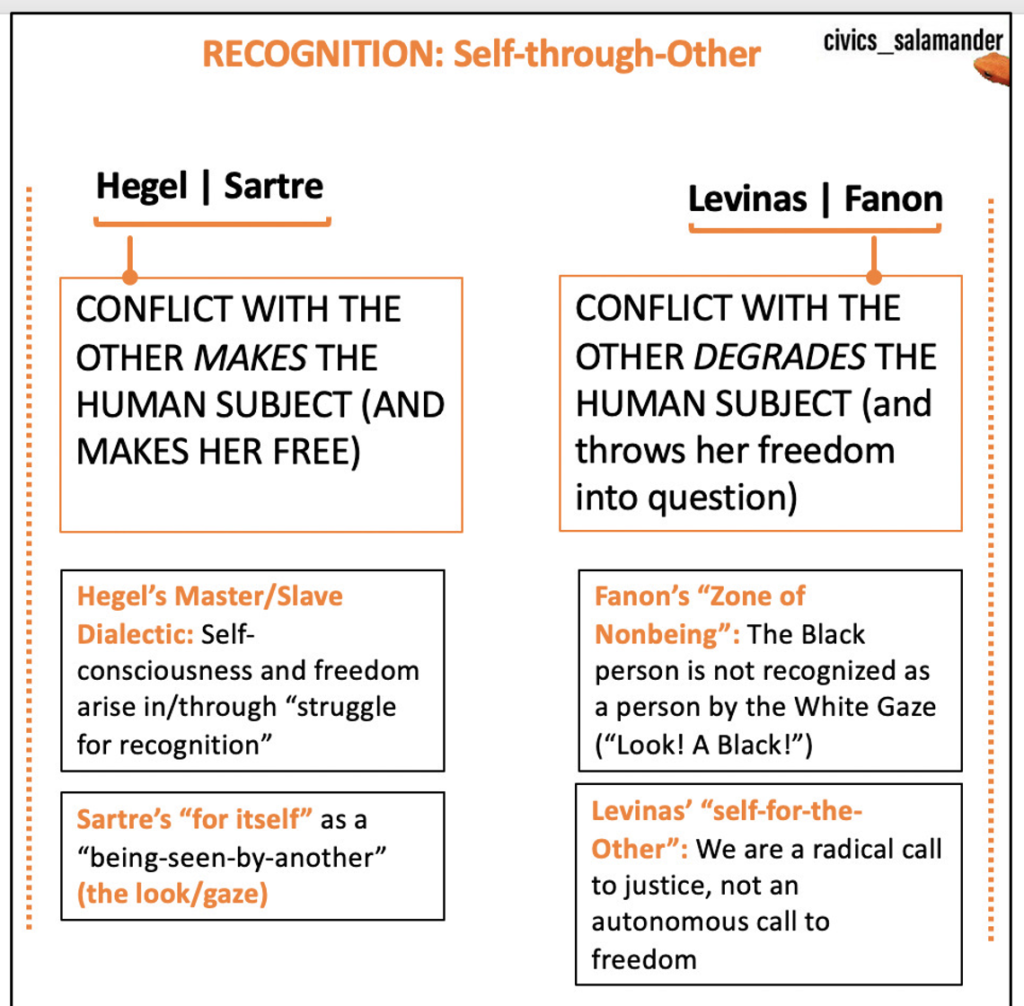
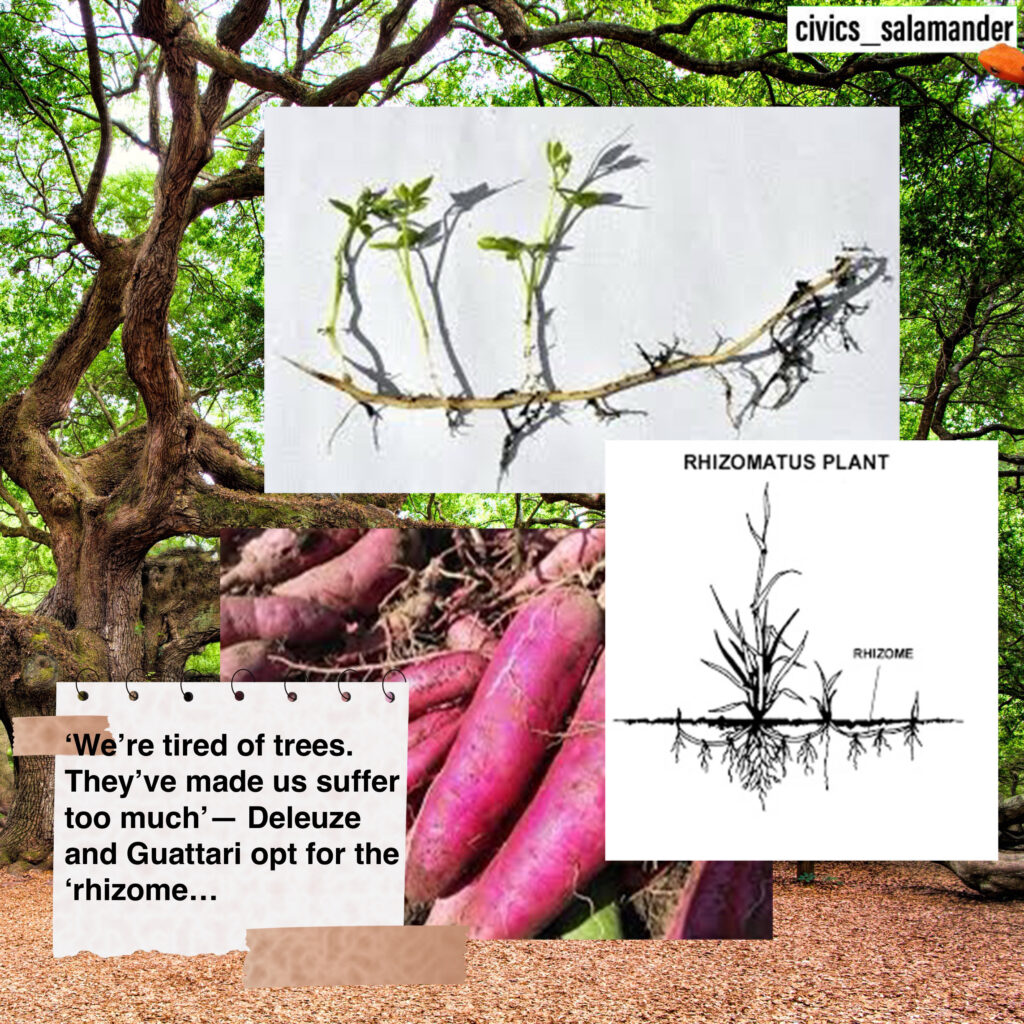
RECOGNITION…
Acknowledging the [dignity? humanity? equality?, ???] of neighbors...
- At the inter-human level: friendly embrace? agonistic respect? responsibility? other?
- At the structural level: dismantling inequitable structures & status quos
- Redistribution, sense1: Progressive Change (what kind?)
- Redistribution, sense 2: Revolutionary Change (what kind?)
Friendship Frames?
Is friendship (or other warm embraces) the goal of recognition (in any of its best senses above)?
- Philosophically speaking, how should we/not relate to neighbors? (strangers? enemies?)
- Is friendship an appropriate model for good politics?
- At the inter-human level: Is recognition the same as “friendly embrace”?
- At the structural level: Can’t we / shouldn’t we work for equity/justice without needing to hug it out?
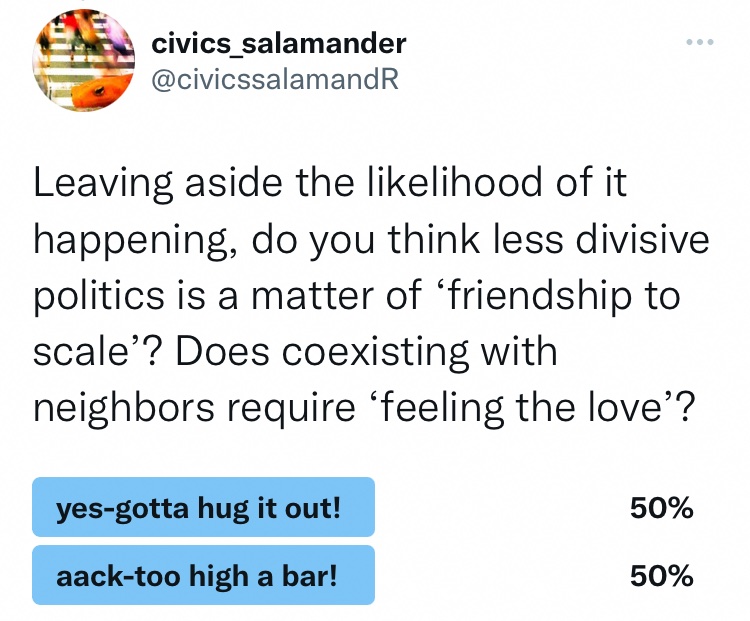
1) Friendly or … ?
- Martin Luther King, Jr.: “love is not like” quote from Christmas Sermon, 1957 + 2nd love quote (see both below)
What do we think MLK hears in the idea of “love your neighbor” and Christian “agape”? Warm-hearted embrace? Or something more complicated?
- Connolly on “respectful agonism”
- Rushkoff on “find the others”
- Levinas on “responsibility” –> Pessin’s “To Hate and Protect”
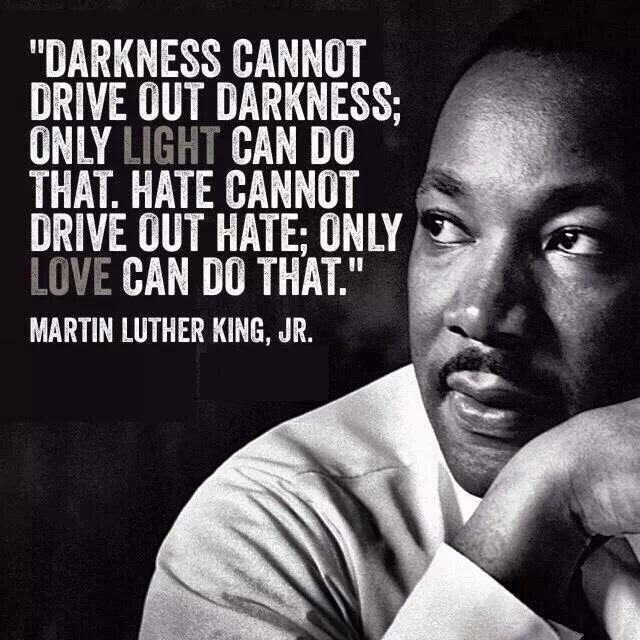
But keep in mind too: MLK reflecting on the Christian teaching of agapic love and the Biblical call to “love your neighbor”:
…it’s significant that [God] does not say, “Like your enemy.” Like is a sentimental something, an affectionate something. There are a lot of people that I find it difficult to like…”
Martin Luther King, Jr., “Loving Your Enemies,” sermon delivered at Dexter Avenue Baptist Church (17 November 1957); for file, and audio link featuring Dr. King preaching this sermon:
http://kingencyclopedia.stanford.edu/encyclopedia/documentsentry/doc_loving_your_enemies/
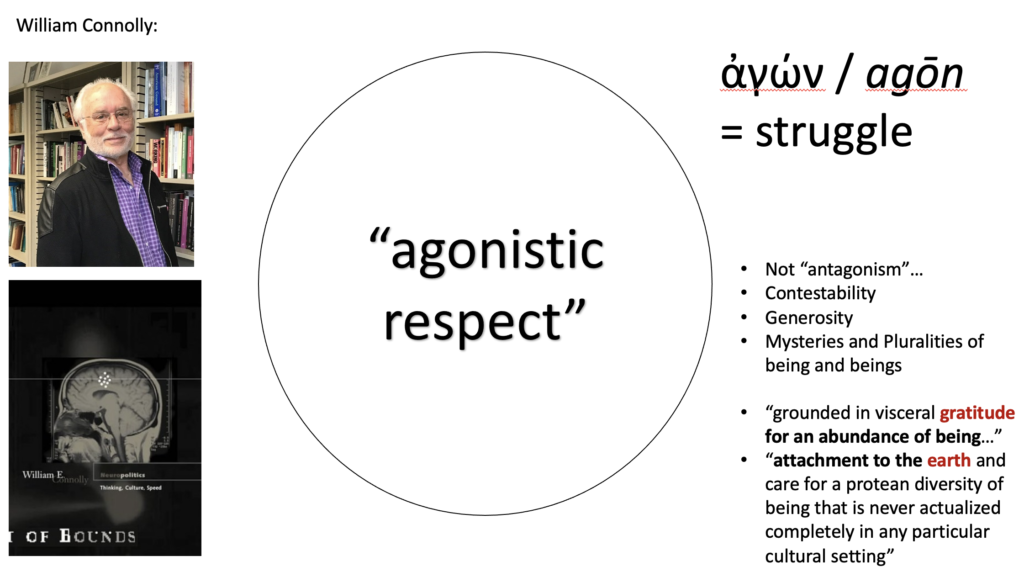
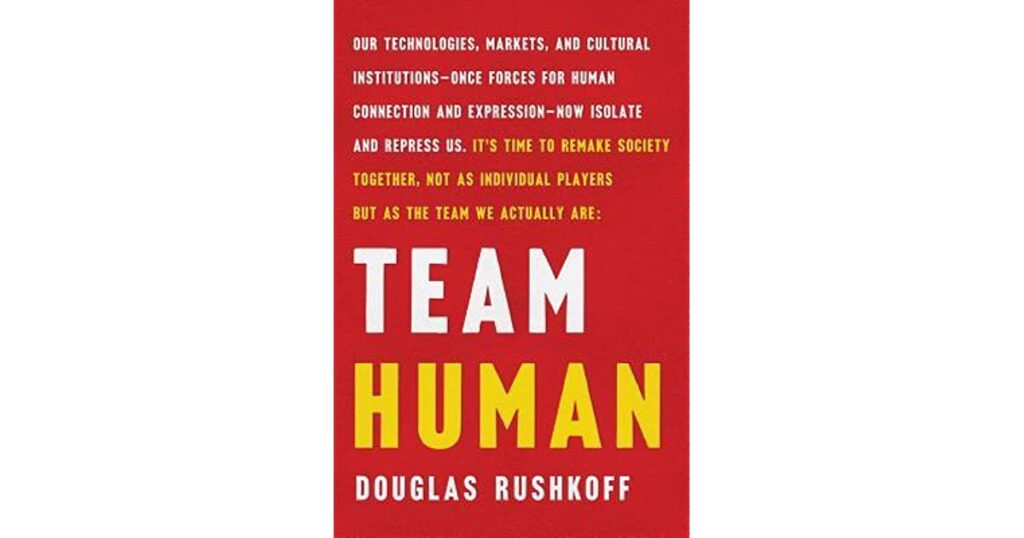
2) RECOGNITION, FREEDOM, JUSTICE–not a warmhearted embrace…
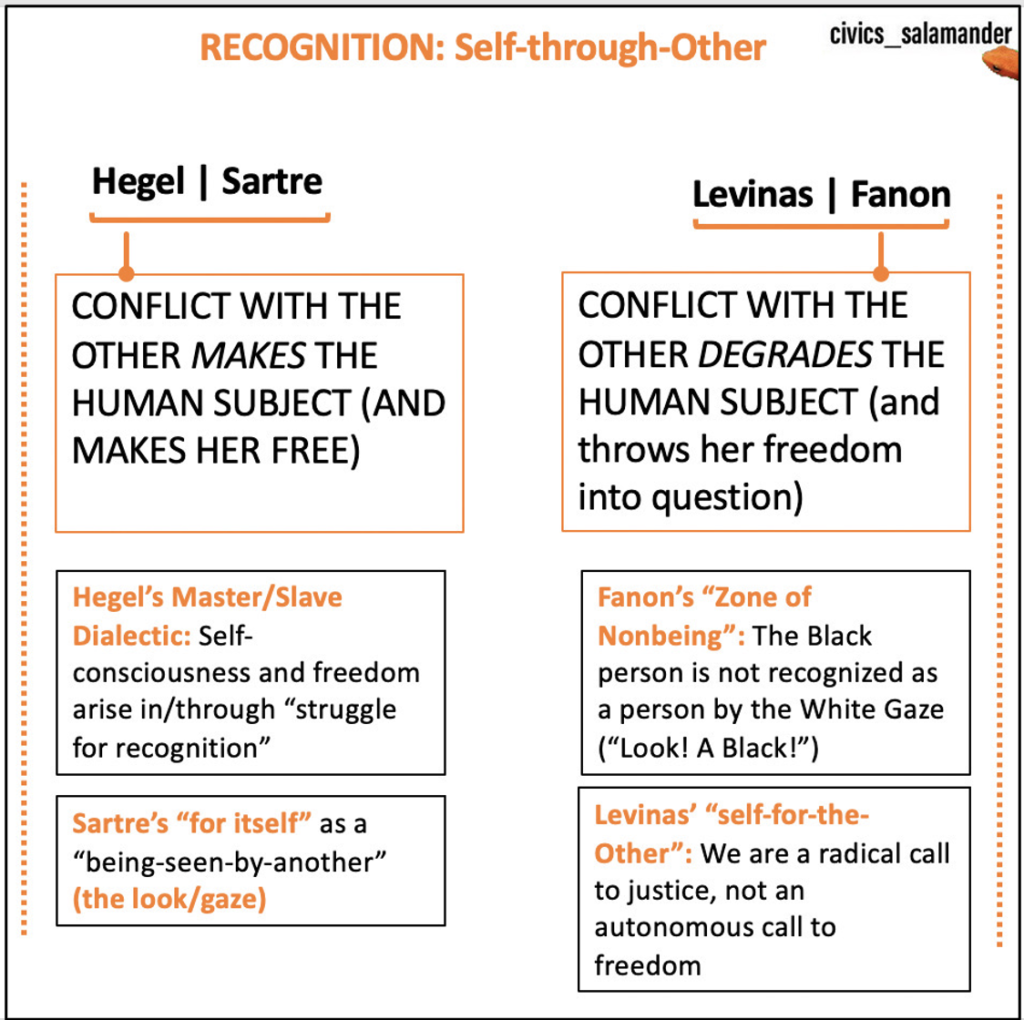
- Self-in-Relation-to-Other (as an account of self):
- Hegel/ How do we know ourselves? (Recognition and the birth of self in/of/against Other)
- Hegel YouTube clip / Philosophy Tube (watch ‘Part 1’) (great theatrical interpretation of at least one key point of Hegel’s “Master/Slave” dialectic; helps raise important questions about human reality: Do we buy this Hegelian account of who/what we are?)
- Sartre on “the look” / “the gaze”: The Keyhole text (How do we know the other as a subject? Through the interruption of self / shame) (from section of Being and Nothingness on “The Look”)
- Fanon on “Look! A Black!” (from Black Skin, White Masks; read excerpt below)– rethinking “the look/gaze” as The White Gaze related to Zone of Nonbeing | See too W. E. DuBois on “Double Consciousness”
- Levinas on responsibility; see selections from Ethics and Infinity — see one text clip below
- Hegel/ How do we know ourselves? (Recognition and the birth of self in/of/against Other)
Sartre:
Fanon:
Levinas:
From “The Look” section of Being and Nothingness (page refs are to the Canvas PDF– link above):
(256b): “…my fundamental connection with the Other-as-subject must be able to be referred back to my permanent possibility of being seen by the Other…(257t): “…I can not consider the look which the Other directs on me as one of the possible manifestations of his objective being; the Other can not look at me as he looks at the grass…
Thus this relation which I call “being-seen-by-another,” far from being merely one of the relations signified by the word man, represents an irreducible fact which can not be deduced either from the essence of the Other-as-object, or from my being-as-subject…
(259t): “The look which the eyes manifest, no matter what kind of eyes they are, is a pure reference to myself. What I apprehend immediately when I hear the branches crackling behind me is not that there is somone there; it is that I am vulnerable, that I have a body which can be hurt, that I occupy a place and that I can not in any case escape from the space in which I am without defense—in short, I am seen…
(259t): “Let us imagine that moved by jealousy, curiosity, or vice I have just glued my ear to the door and looked through a keyhole. I am alone…My attitude, for example, has no “outside”; it is a pure process of related the instrument (the keyhole) to the end to be attained (the spectacle to be seen), a pure mode of losing myself in the world, of causing myself to be drunk in by things as ink is by a blotter…
(260m): But all of a sudden I hear footsteps in the hall. Someone is looking at me! What does this mean? It means that I am suddenly affected in my being and that essential modifications appear in my structure…I now exist as myself…I see myself because somebody sees me…
(260b): This means that all of a sudden I am conscious of myself as escaping myself, not in that I am the foundation of my own nothingness but in that I have my foundation outside myself. I am for myself only as I am a pure reference to the Other…
[…] (261t): [Shame] is the recognition of the fact that I am indeed that object which the Other is looking at and judging…I am this self which another knows…”
[Sartre, Being and Nothingness]
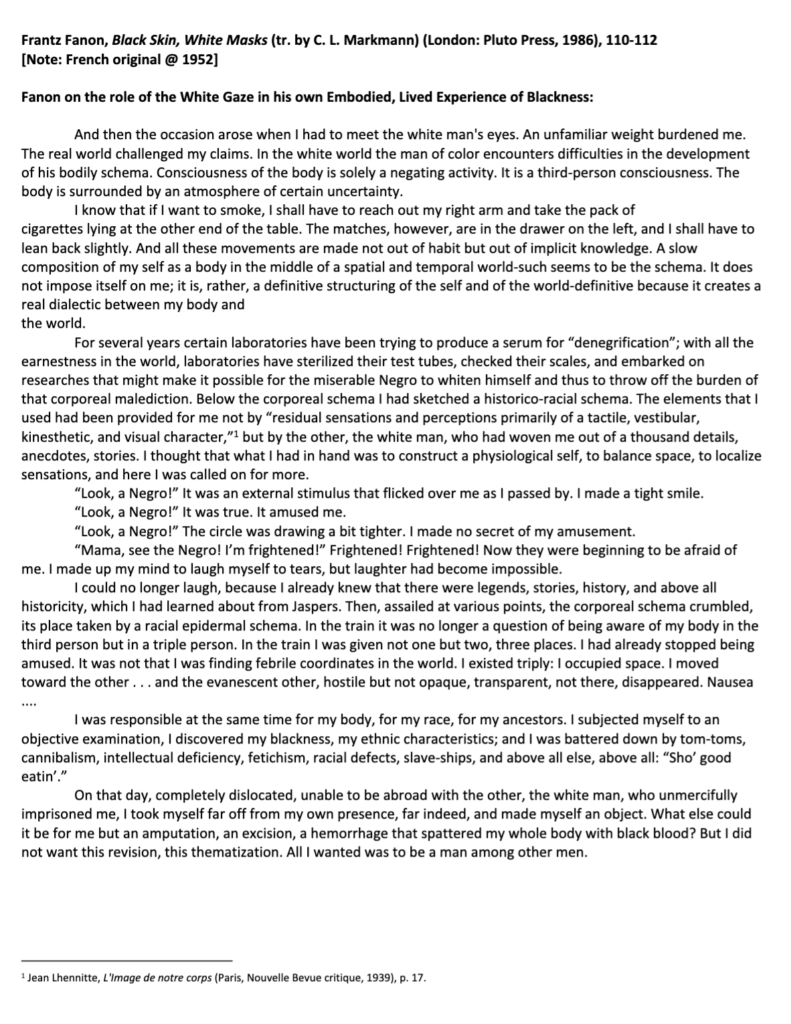
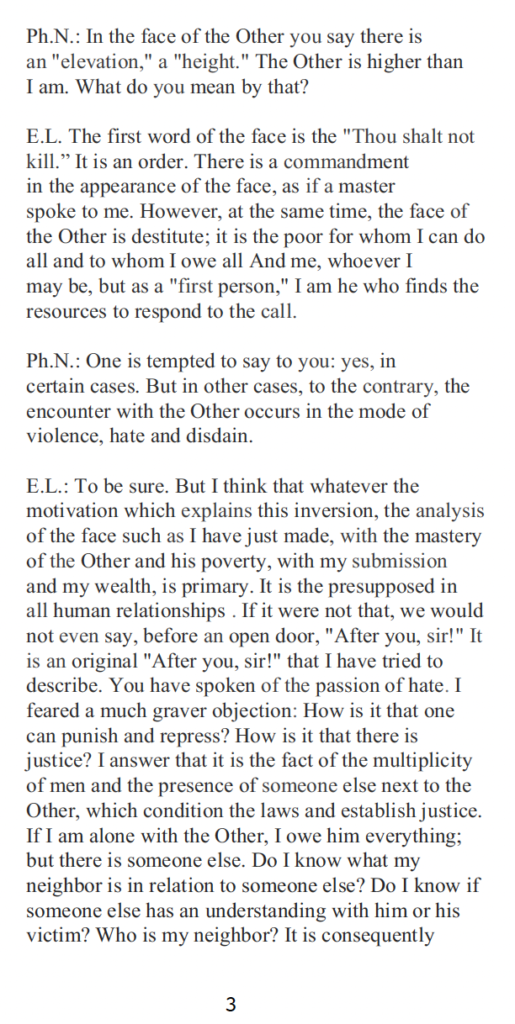
2) Recognition as Potentially Oppressive. Lack of Recognition as potentially oppressive.
- Issue One: Recognition or Redistribution?
- Issue Two: Paradoxes of Recognition: Fanon on the White Gaze and the Zone of Non-Being | Bonilla-Silva on colorblindness
- Issue Three: Connolly on the potential of “multiculturalism” to become “fundamentalist”? (see e.g. William E. Connolly’s “Pluralism, Multiculturalism and the Nation-State: Rethinking the Connections, Journal of Political Ideologies (1996), 1(1): 53-73)
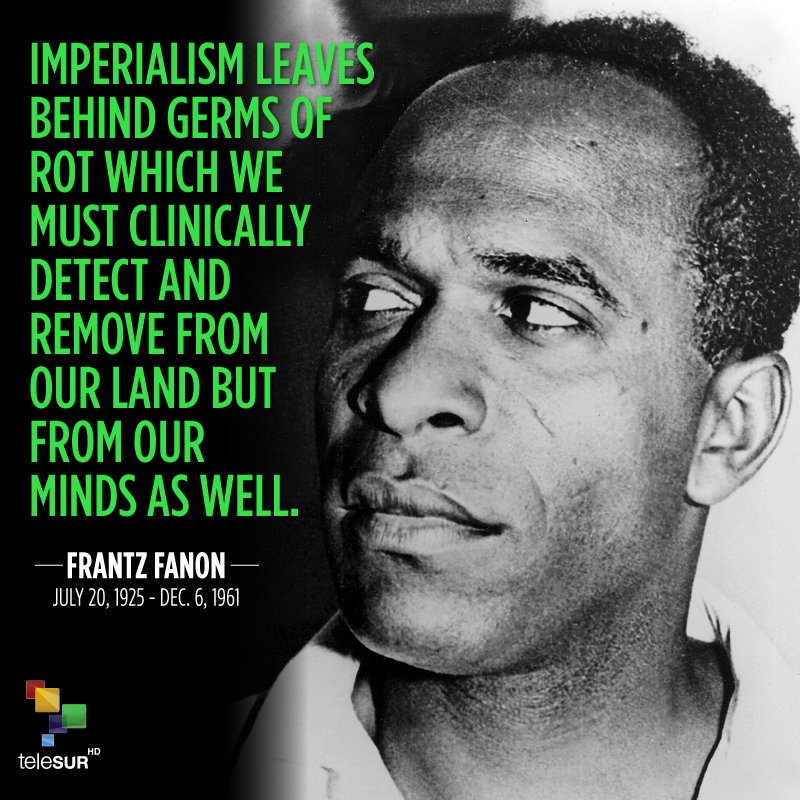
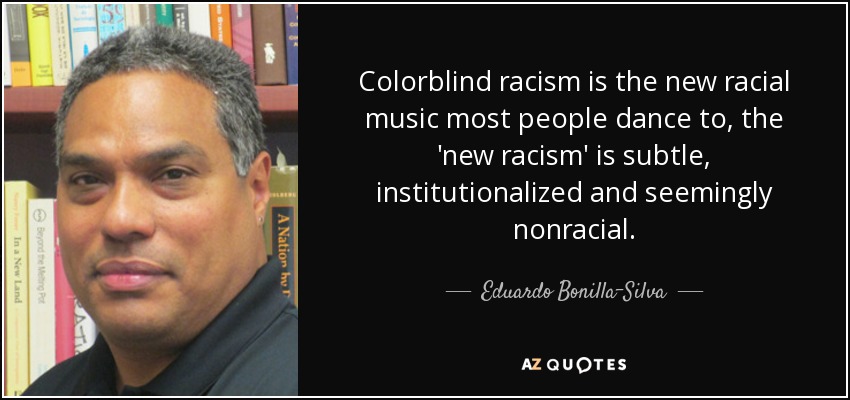

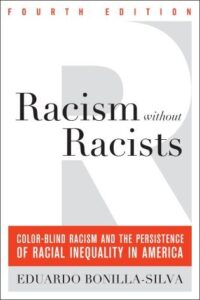
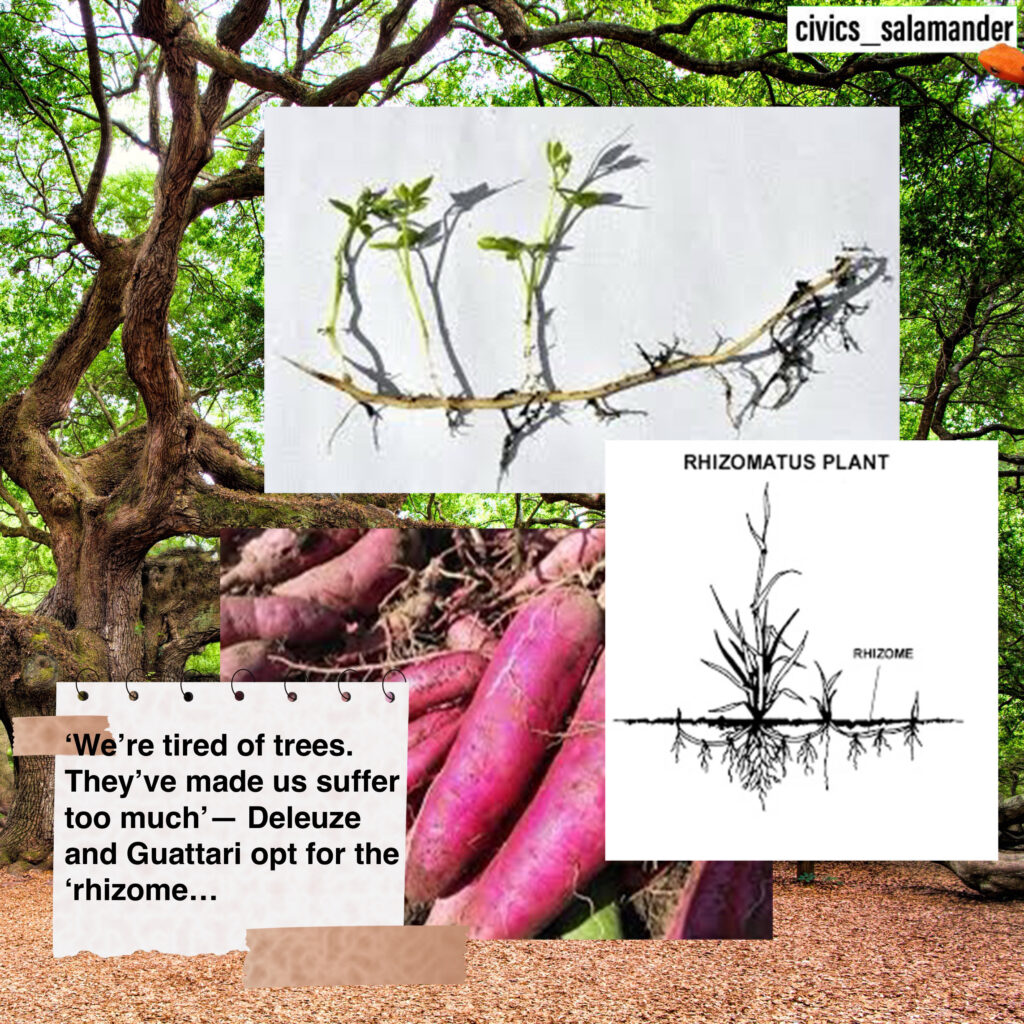
3) Racism, Genocide, Eugenics: On the Terrors of “You are Not Human”
National Museum of African American History and Culture (NMAAHC)
- a) Click here for the interactive learning/exhibit tours on the ‘searchable museum‘
- b) Click here for interactive exhibits/histories/artifacts, including: Slavery and Freedom, 1400-1877
- c) On structural inequities around health during COVID, click here
- d) Click here for their ‘Curator Chats’ videos
- e) Click here for Talking About Race resources
- f) Click here for Exhibitions
- g) For many other links, click ‘Explore’ in the top menu bar on the main page (or on any page)
United States Holocaust Memorial Museum (USHMM)
- a) Search the ‘Holocaust Encyclopedia’ online tool here
- b) Click here for an overview of ‘Antisemitism’
- c) Click here for an overview of the term and practice of Genocide
- d) Click here for an introduction to the Holocaust
- e) Click here for the history of the Holocaust via maps
- f) Click here to learn about the Nazi genocide of Roma communities
Eugenics in America:
1. “Eugenics and Sterilization in the US” PPT / Alexandra Minna Stern (also available open-acess online here)
2. 1904/14 Science of Eugenics book by Mary Ries Melendy; PDF of Table of Contents and opening pages on Canvas; here are the cover and opening pages and pictures:
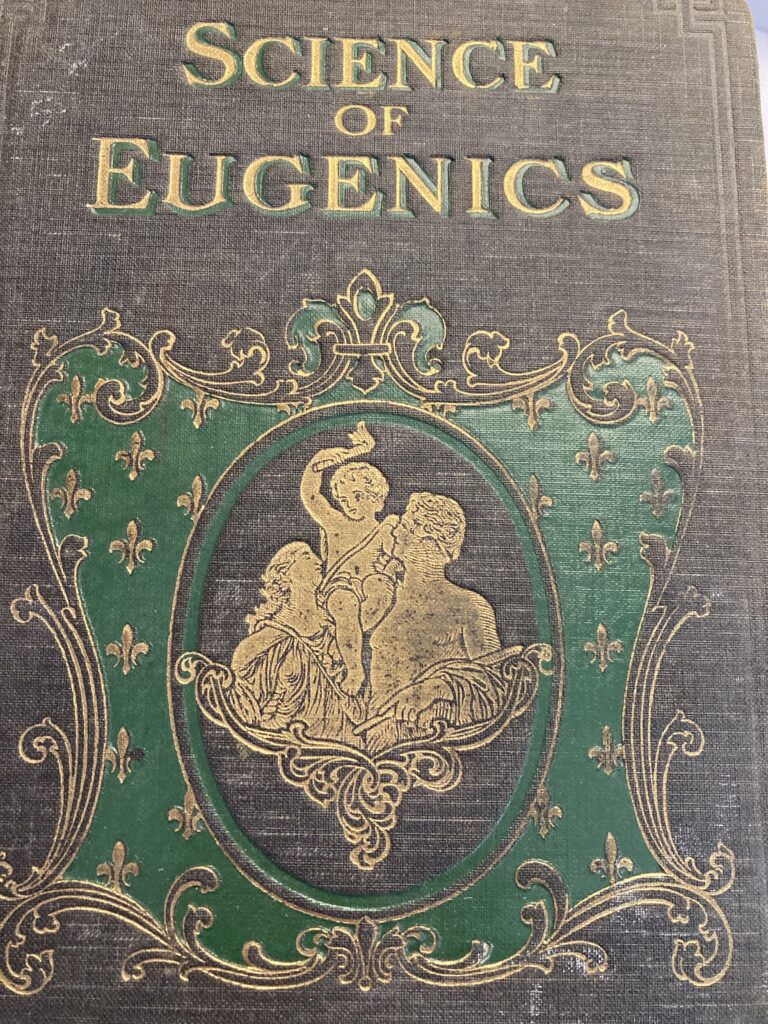
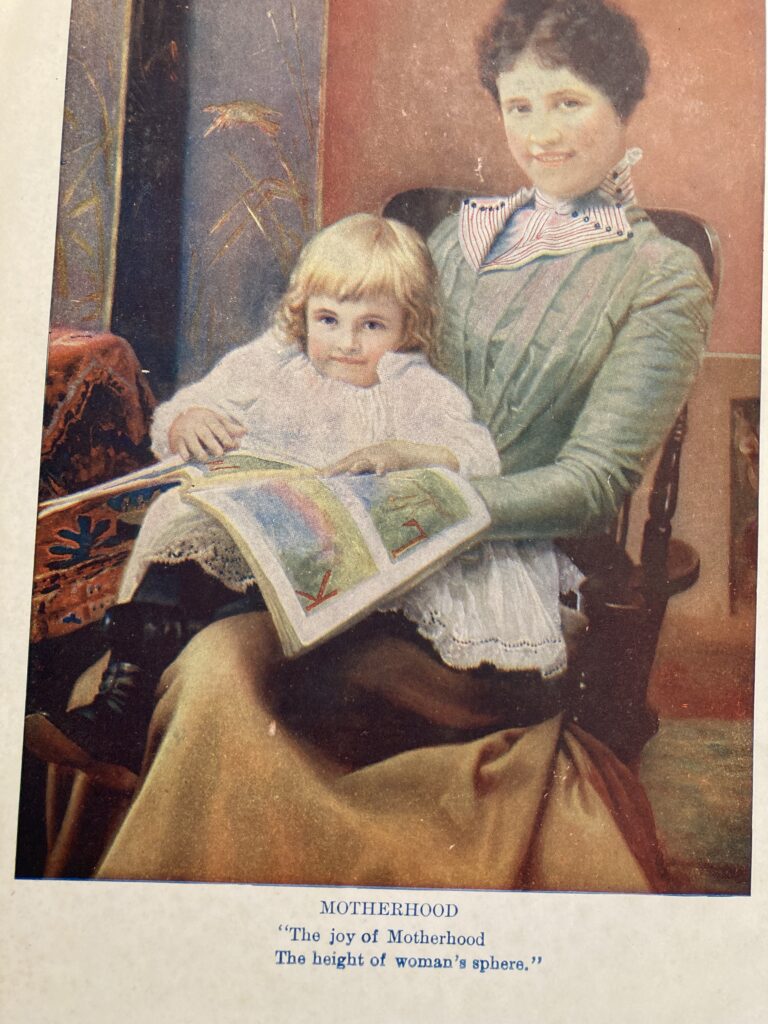
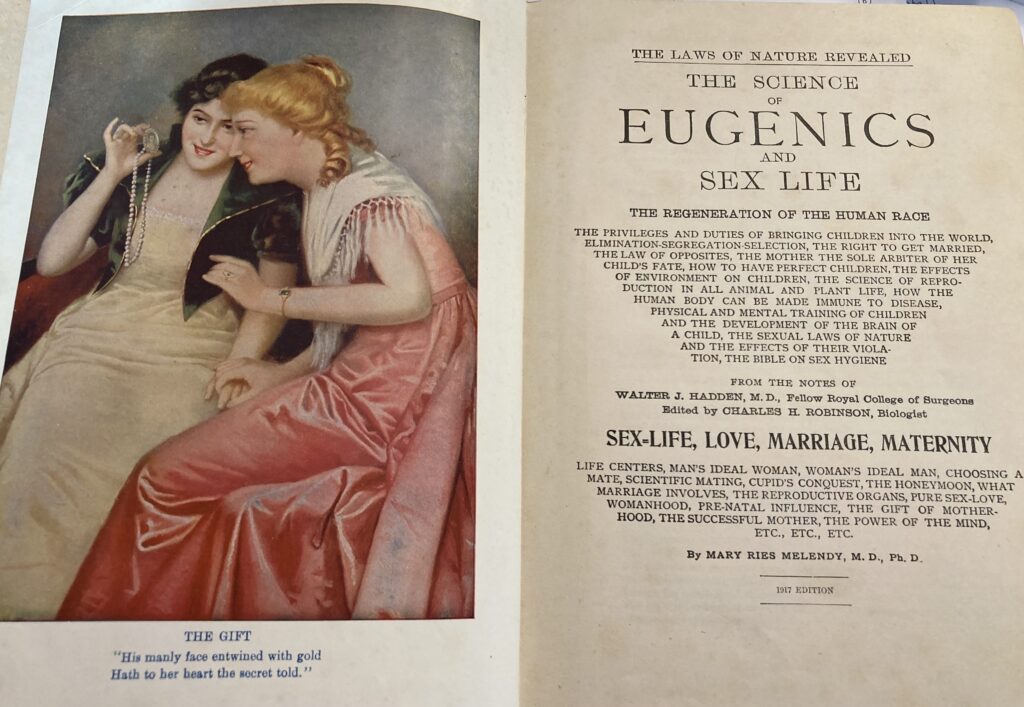
1.5.22
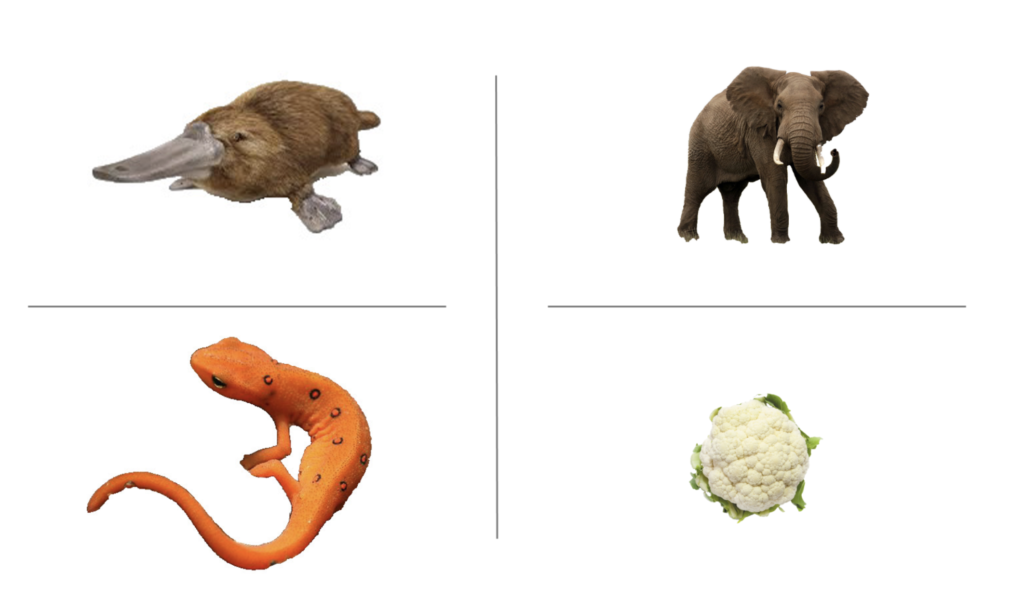
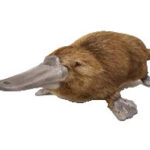
I. The Platypus. (In this class, we’ll be talking about paradoxes)
1. Two starting Zoom polls on social structures…
- You want a system…
- …where we can all pretty much do what we want to do (as long as we don’t cause harm to others)
- …that helps us look out for each other
- Discuss!
- To the PPT: Some frames
- Some course themes (see Syllabus)/ The Flow of the Class (PPT here) (and click on the assignment types)
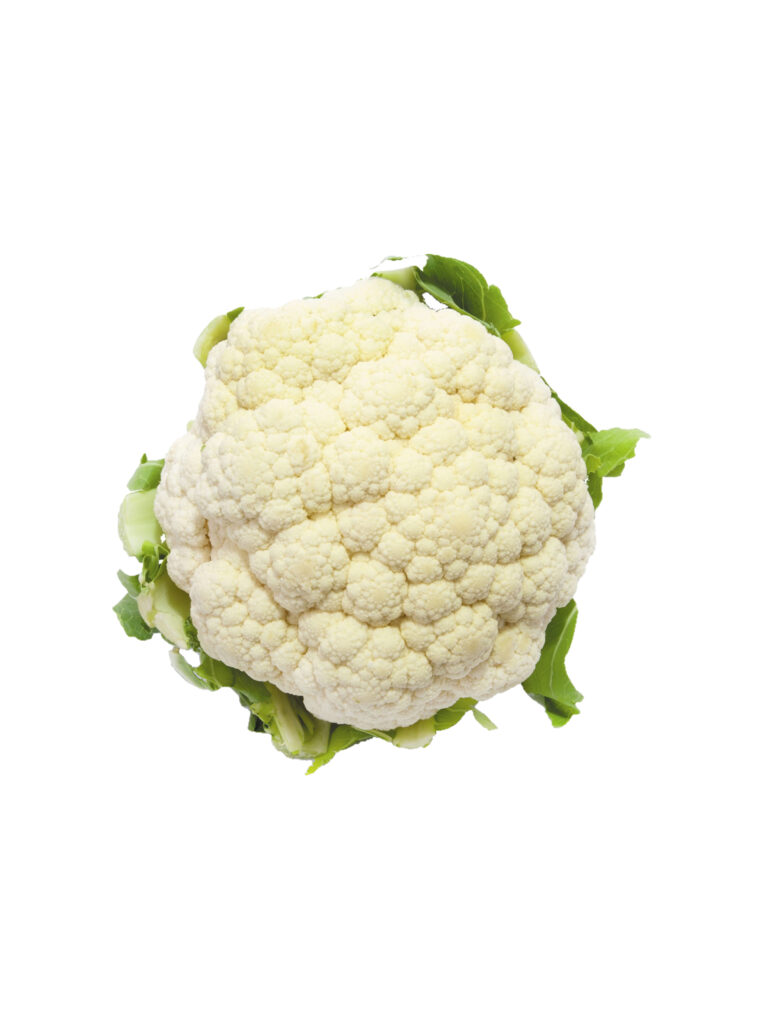
II. The Cauliflower. (In this class we’ll explore how theories of humans implicate and are implicated by theories of the political)
5. Human Subject <—> Social <—> Political
- Download Sartre (…on cauliflower!)
- Q1: What is his view of human nature at its deepest/best?
- Q2: What kind of politics do you think this might lead to –and in particular, how do you think his sense of humans connects to his sense of politics?
